Report

Executive summary
The year 2022 saw a global tempering of the peak activity witnessed in 2021, triggered by tightening monetary policies across American and European markets as economies emerged from a Covid-19-induced suppression in economic activity. Countries coped with high inflationary pressures on the back of an extended loan moratorium, Covid-19 stimulus, and supply-demand gaps. These gaps were exacerbated by the mounting geopolitical tensions (Russia-Ukraine conflict, US-China decoupling), which led to trade sanctions and global shortages. Resulting market volatilities cast a shadow over global private equity and venture capital (PE-VC) activity, with investments declining by 15% to 30% across regions. Indian PE-VC investments surpassed $60 billion for a third time, as India demonstrated some resilience in the face of global headwinds. Investment value closed at $61.6 billion, with a moderate decline of 12% from 2021’s peak of $69.8 billion, supported by a positive economic outlook, driven by structural enablers such as large consumption opportunity, improved digital infrastructure, and China + 1 tailwinds. Amid a significant contraction in the region, India’s share of PE-VC investments in Asia-Pacific strengthened from less than 15% to approximately 20%.
Written in collaboration with
Written in collaboration with
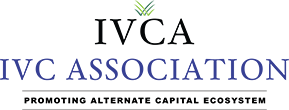
Indian PE-VC activity rode the momentum seen in H2 2021 till H1 2022, which saw dealmaking of close to $83 billion in 12 months. The exuberance at the start of the year, with record dealmaking of close to $40 billion in the first 6 months, was followed by decelerating deal activity closing at $21 billion. Different trends impacting distinct sectors show a clear rationale for these developments. Traditional sectors such as banking, financial services, and insurance (BFSI), energy, healthcare, and manufacturing, grew by approximately 50% due to robust domestic demand and accounted for around 60% of deals greater than $100 million. In contrast, the boom in consumer tech and internet stocks riding on Covid-driven shifts in consumption slowed through the year, accompanied by a public market rout in tech stocks that challenged valuations. The latter half of the year saw public market valuations spilling into the private markets, making dealmaking more challenging as the gap in valuation expectations slowed investment activity. As a result, consumer tech and information technology (IT), which drove around 60% of deal value in 2021, contracted to ~30% in 2022.
On aggregate, the expansive base of deal volume of 2021 was sustained this year with more than 2,000 deals, as small and mid-sized deal activity continued. Venture capital and growth equity continued to contribute significantly to deal volume with almost 90% of deals, albeit with reduced cheque sizes. Share of VC investments slowed from 2021’s seminal annual value of $39 billion to $26 billion in 2022 (55% to 43%)—but retained the breakout compared to pre-Covid era deal values of approximately $10 to $12 billion a year. PE deal value stayed relatively robust with lower volumes. There was a shift in the contribution of megadeals as $1 billion investments slowed, with buyouts slowing significantly amidst tighter credit markets and mismatched valuations delaying deal closures. Exits followed a similar decline, slowing to $24 billion from an all-time high of $36 billion in 2021. Here as well, traditional sectors dominated the share of exits greater than $100 million, with healthcare and manufacturing showing the largest increase in exit value. The exuberance around new-age internet start-up listings waned as initial public offerings (IPOs) of 2021 didn’t meet public market expectations—cascading into delays and eventual cancellations of many planned IPOs of consumer tech firms, such as OYO, MobiKwik, PharmEasy, BoAt, and others. However, IPOs of traditional sectors continued, with listings such as Rainbow Hospitals and Medanta Medicity outperforming the market index. In an interesting contrast, the buoyancy in the Indian stock markets (with Nifty reaching its all-time high in November) allowed traditional sectors to find support and enabled strong exit opportunities in follow-on public market exits. Secondary markets dampened towards the second half of the year after 12 months of heated activity.
Dry powder for private equity surged on the back of a flurry of fund-raises following 2021’s activity. General partners (GPs) closed fresh rounds in record time and were flush with funds as limited partners (LPs) dedicated capital to chase growth opportunities, with Indian allocations of Asia-Pacific funds by top GPs increasing. Leading Indian GPs, such as Kedaara Capital and ChrysCapital, increasingly competing with global counterparts on large deals, crossed $1 billion in new fund-raises. Additionally, LPs and sovereign wealth funds (SWFs) have demonstrated a marked shift towards solo dealmaking from their earlier co-investing playbook. With mature LPs deepening play in the Indian markets and newer LPs setting up dedicated teams and offices, solo dealmaking by select LPs expanded to 30+ deals with investments worth approximately $6 billion. Investors also accelerated sector diversification this year with more funds expanding into traditional sectors such as healthcare, BFSI, energy, and manufacturing, overriding a continued trend of tech sector expansion in the previous 3 years. At the same time, amidst abundant dry powder, funds became increasingly conservative and judicious as the sentiment shifted through the year—focus has narrowed to fewer, quality assets and towards driving value creation within their portfolios with a dedicated focus on profitability.
BFSI, which experienced a slump due to Covid-19, lower growth, extended loan moratoriums, and an increased risk of default, is witnessing a resurgence in interest. BFSI, including fintech, saw investments of $9.7 billion, with the sectors commanding 18% of India’s PE-VC investments. India’s outstanding credit has doubled since 2014 to reach $2 trillion, driven by increasing consumption (with a growing middle class), low credit penetration today, increasing openness to credit including for discretionary expenses, and digital adoption accelerating financial access. Non-banking financial companies (NBFCs) are at the forefront of the growing opportunity and have expanded their market share from ~21% in 2014 to ~27% in 2022, focused on growing segments such as personal loans, consumer durables, and two/three-wheeler (2W/3W) finance. They have increased presence in rural markets, developed seamless user journeys, driven quicker disbursements leveraging alternate data, and established robust collection processes—taking away share from public sector banks. Fintech has also experienced sustained deal momentum amidst evolving regulatory changes, with multiple players capitalising on the tailwinds and innovations within lending and wealthtech.
Investors are increasingly looking at India’s healthcare sector for secular returns amidst turbulent tides, with an increase in interest in health providers, pharma, diagnostics, and single-specialty providers since 2020. India’s healthcare sector saw deal values reach $4.3 billion in 2022, at approximately 8% of total investments. However, 2022 was a year where healthcare delivered, expanding to nearly 16% of total exit value at $3.5 billion. In a year that saw marquee public market exits, IPOs, and secondary sales, KKR’s exit from Max Healthcare grabbed headlines with an exit value of $1.6 billion in 4 years driven by a significant EBITDA expansion, followed by other large exits such as Everstone’s exit from Sahyadri Hospitals and Carlyle’s and British International Investment’s IPOs of Medanta Medicity (Global Health) and Rainbow Hospitals. Healthcare providers continue to focus on growth led by scale expansion through consolidation by large players and brownfield expansion, increased specialisation in service mix, and cost optimisation initiatives, which have resulted in high average revenue per occupied bed (ARPOB), improved utilisation, and increased margins. With robust and streamlined models emerging out of Covid, listed health providers have generated two to three times the returns of the Nifty index in recent years.
This year also witnessed an accelerated pace of ESG-driven investing, which shifted from mind-share towards wallet-share. With environmental, social, and governance (ESG) investments more than doubling from $3 billion to $8 billion, the share of ESG has elevated from 5% to 13% of total PE-VC investments in a single year. India has seen close to $19 billion in ESG-aligned investments in the last 5 years, with clean energy driving more than 60% share at $12 billion, and electric vehicle (EV) manufacturers commanding around 20%. The year 2022 saw marquee deals such as Mubadala and Blackrock’s investment in Tata Power, KKR’s investments in Serentica Global and Hero Future Energies, and TPG Rise in Tata EV. Players like Actis, British International Investment, and OTPP are also expanding clean energy and EV play as part of their focus on responsible investing. Clean energy saw robust deal activity in 2022, as improved efficiency, climate agenda (COP27 accord—2022 UN Climate Change Conference) and government’s focus on utilities-scale investments improved the cost competitiveness of renewables. The EV segment has also seen increasing deal traction with total deal activity of close to $4.2 billion and 10 deals of more than $50 million over the past 5 years. With ESG becoming more central to investors’ value creation and exit plans, improved ESG traction is here to stay.
Looking back, India’s private equity industry has evolved significantly, with a broadened investor base that quadrupled from 200 to 800 active investors since early 2010s, diverse pools of capital, and acceleration in buyout capital for quality assets. The industry has benefited from a supportive regulatory landscape, innovative digital infrastructure, and deepening maturity of founders and talent. This has enabled tremendous growth in exit opportunities, complemented by the growth in strategic sales and secondary markets, resulting in value capture of 10x to 20x for multiple investors across investment cycles since the 2010s. The recalibration of 2022, characterised by cautious capital deployment and a shift in the shape of deal flow after a watershed year in 2021 is likely to extend into 2023. Domestic consumption-led sectors such as healthcare and consumer/retail will sustain momentum, manufacturing will benefit from China + 1 tailwinds, and export-oriented IT and software as a service (SaaS) will stay resilient. In addition, regulatory changes and investor focus on unit economics are likely to contribute to clearer sector landscapes and better articulation of value roadmaps. Indian private equity, bolstered by a maturing ecosystem, demonstrates confidence and resilience to navigate the turbulence ahead and continue its accelerating flywheel of growth.
Reflections on the year

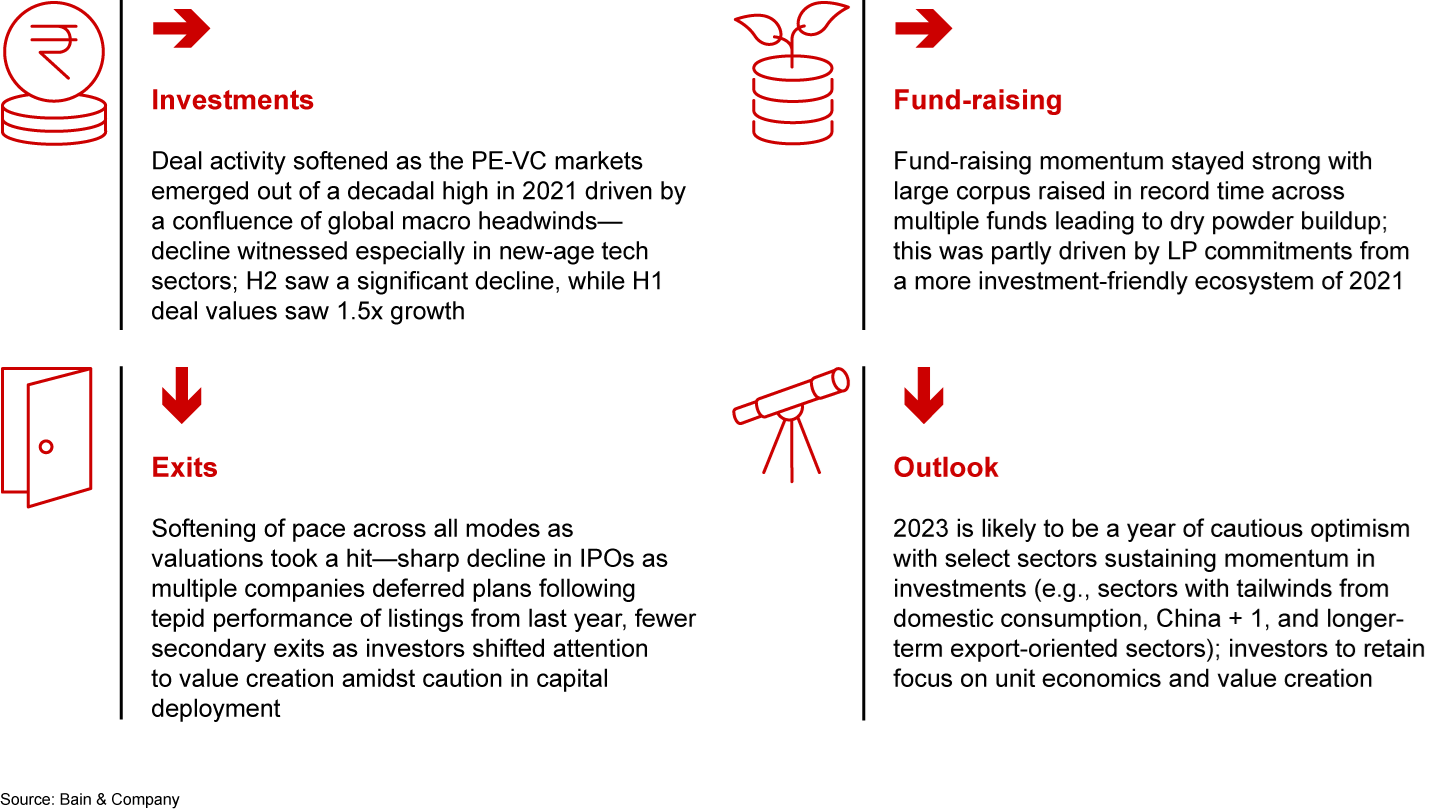
2022 witnessed material PE-VC investments despite multiple shifts in the landscape driven by global macro uncertainties

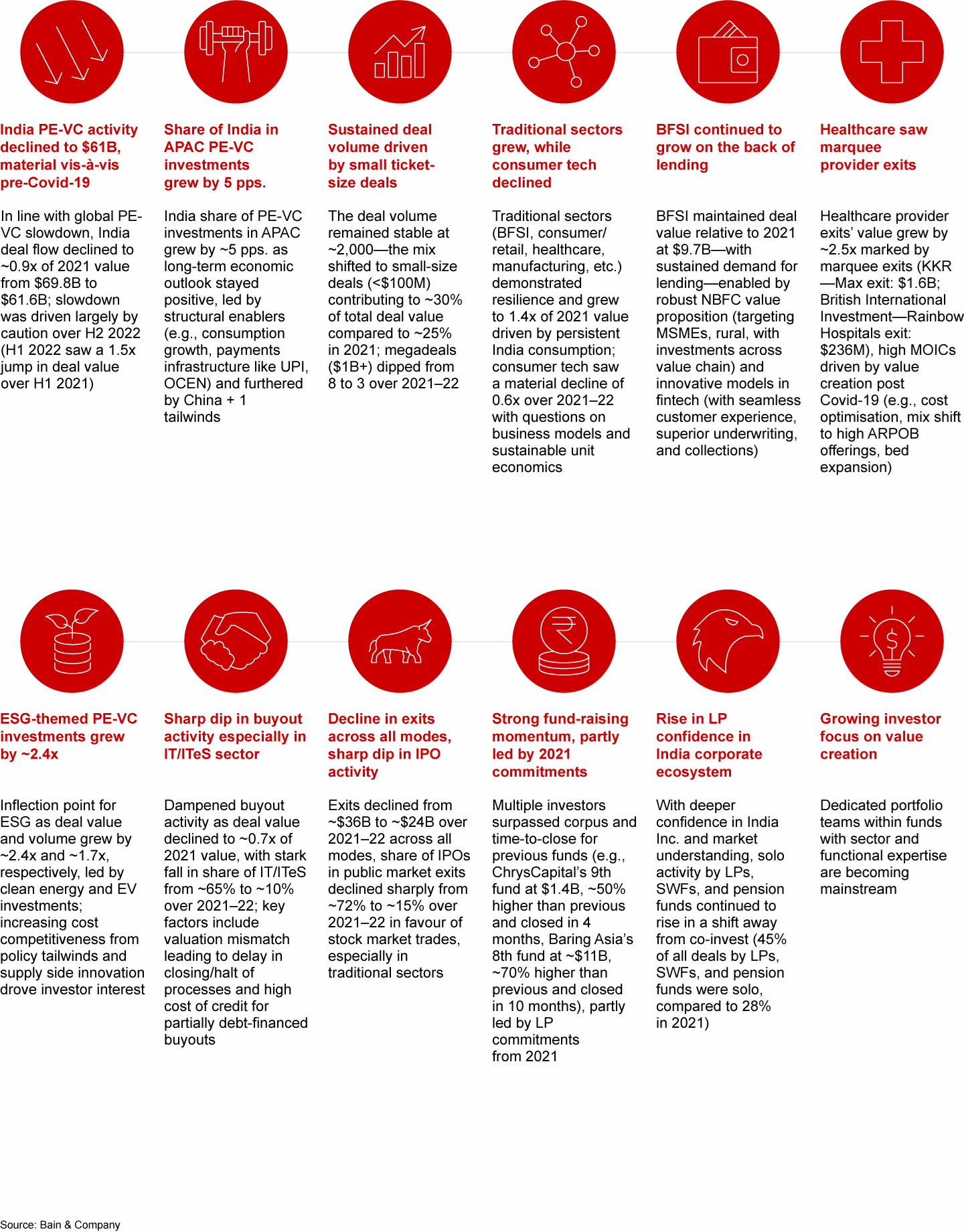
Dealmaking and exits: A year of reckoning
- 2022 was a year of recalibration for PE-VC investments in India, declining from the record highs of $70 billion in 2021 to $62 billion in 2022 amid global headwinds. Structural enablers helped India surpass $60 billion in investments for a third time in a demonstration of resilience.
- India’s share of Asia-Pacific grew from ~15% to ~20% in a single year, as China + 1 tailwinds and India’s macro robustness made the country a bright spot for investing amidst decelerating capital flow in the region.
- Like other major economies, Indian PE-VC activity was a tale of two halves through the year—shifting from record dealmaking of $40 billion in the first half to a dip in deal value to $21 billion in the second half, marked largely by a drawdown in VC cheque sizes and a shift in the deal mix.
- The year saw sustained deal volumes with small-sized deals (less than $100 million) contributing a larger share of overall deal flow (from 24% to 31%). Blockbuster deals (greater than $1 billion) in VC and private equity buyouts saw significant deceleration.
- IT/ITeS buyouts, commanding a share of $10 billion of the all-time high in buyout value of $16 billion in 2021, contracted as multiple IT sector deals failed to close due to a mismatch in valuations. The increasing cost of credit and rise in hedging costs also put a damper on buyout activity.
- Traditional sectors like BFSI, energy, healthcare, and manufacturing grew by around 50% in 2022 due to robust domestic demand. Consumer tech faced challenges amidst uncertainty in business models and unit economics while IT/ITeS (IT Services) faced challenges in export demand driven by an uncertain global environment, with investment value in the sectors declining by 60% to 70%.
- Exit activity slowed in 2022 to $24 billion across all modes of exit after an all-time high of $36 billion in 2021, but surpassed activity seen pre-2021. Traditional sectors dominated the share of exits greater than $100 million, with healthcare and manufacturing showing the largest increase in exit value.
- Secondary sales volume declined by around 35% over 2021 to 2022, and the public market exit route through IPOs came to a halt, as many companies deferred listings with 2021’s new-age internet start-up listings underperforming on the public markets. However, traditional sectors saw an expansion in follow-on public market sales amidst a buoyant public market.
Indian PE-VC activity slowed down from the peak of 2021 in a challenging year but surpassed $60 billion for the third year in a row

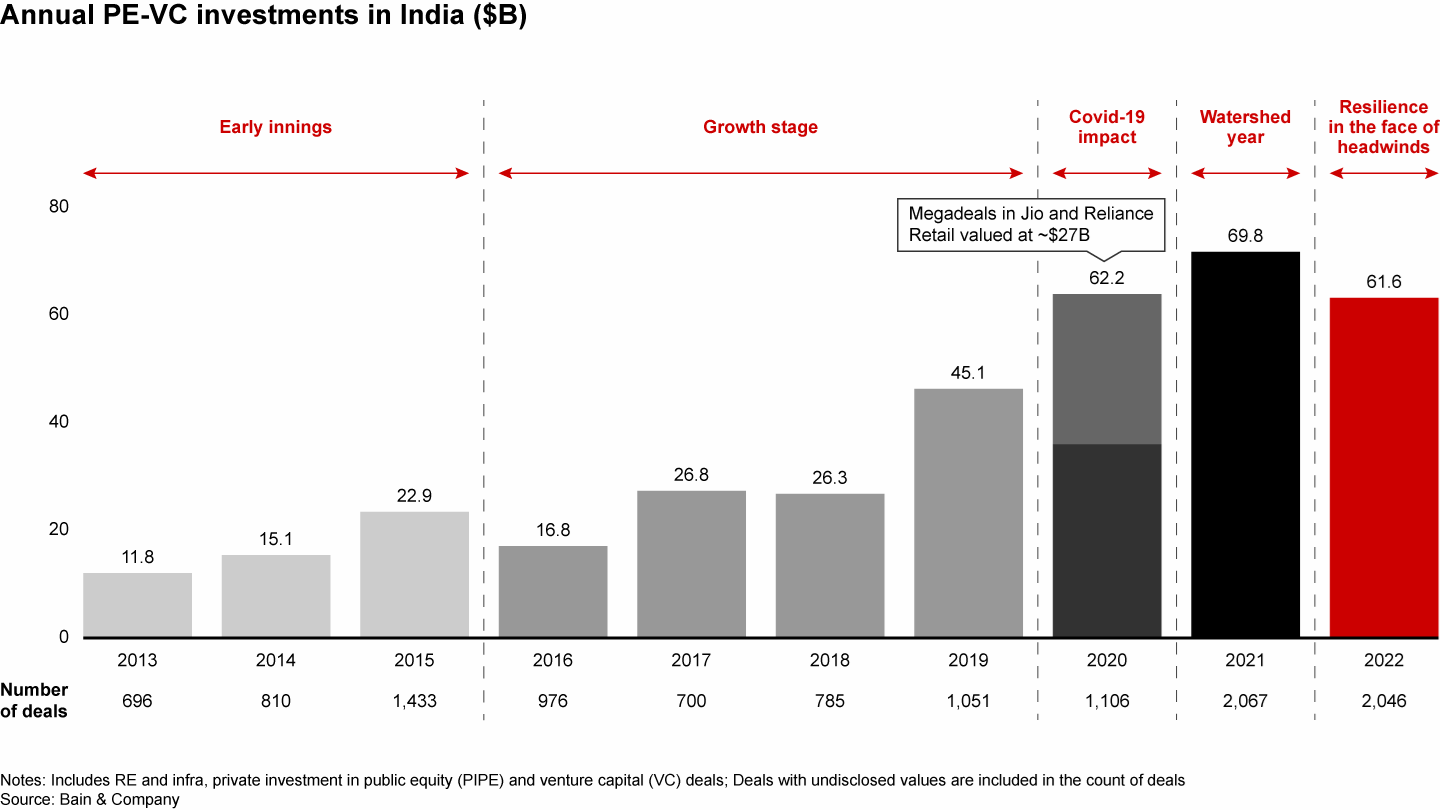
Global PE-VC investments saw a decline in 2022 led by mounting macroeconomic uncertainties; investments in India also declined, albeit less sharply

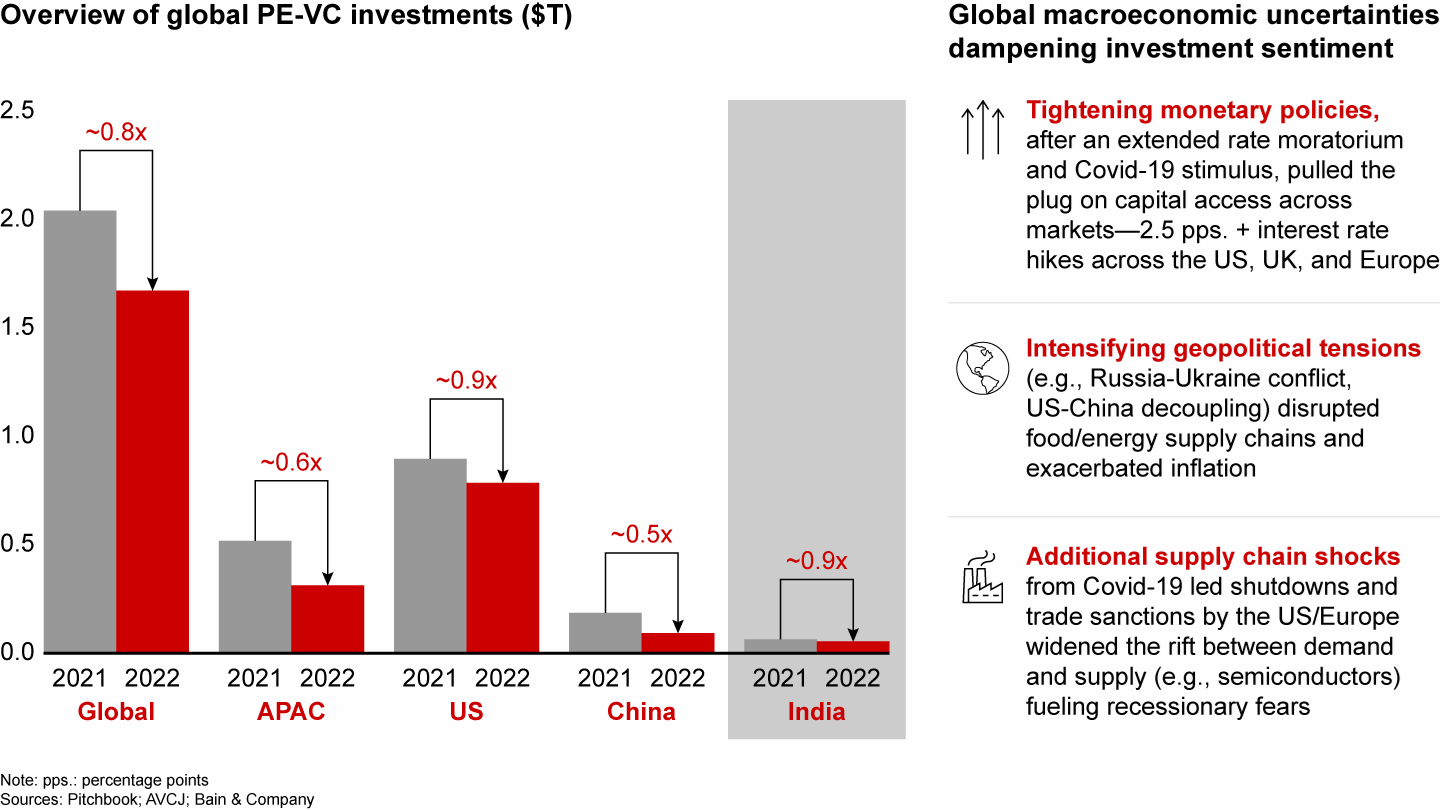
APAC witnessed significant pullback, but India’s share of PE-VC investments in the region strengthened further

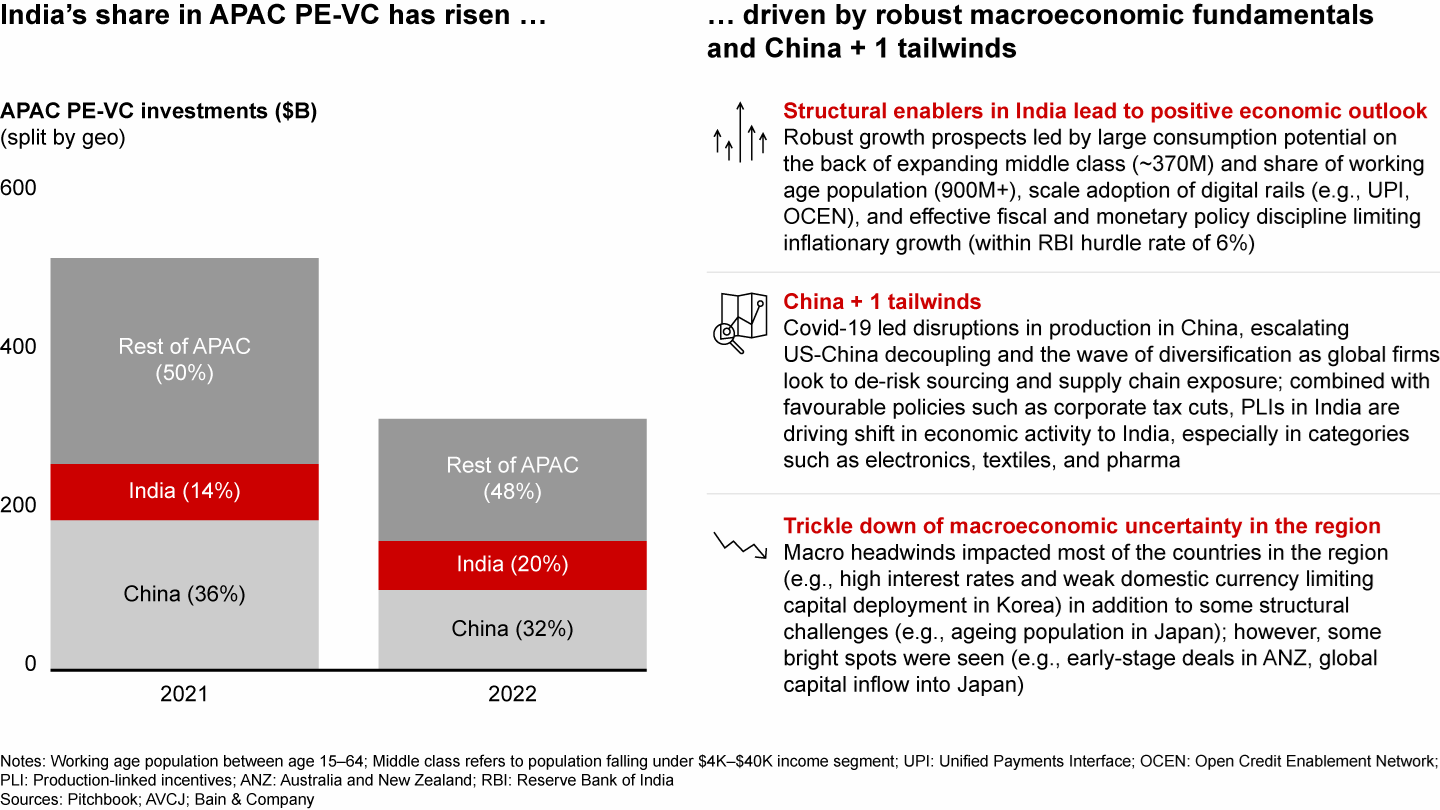
A nuanced look reveals slowing momentum from H2 2022 onwards—deal value and volume reduced in H2 2022 vs. H1 2022

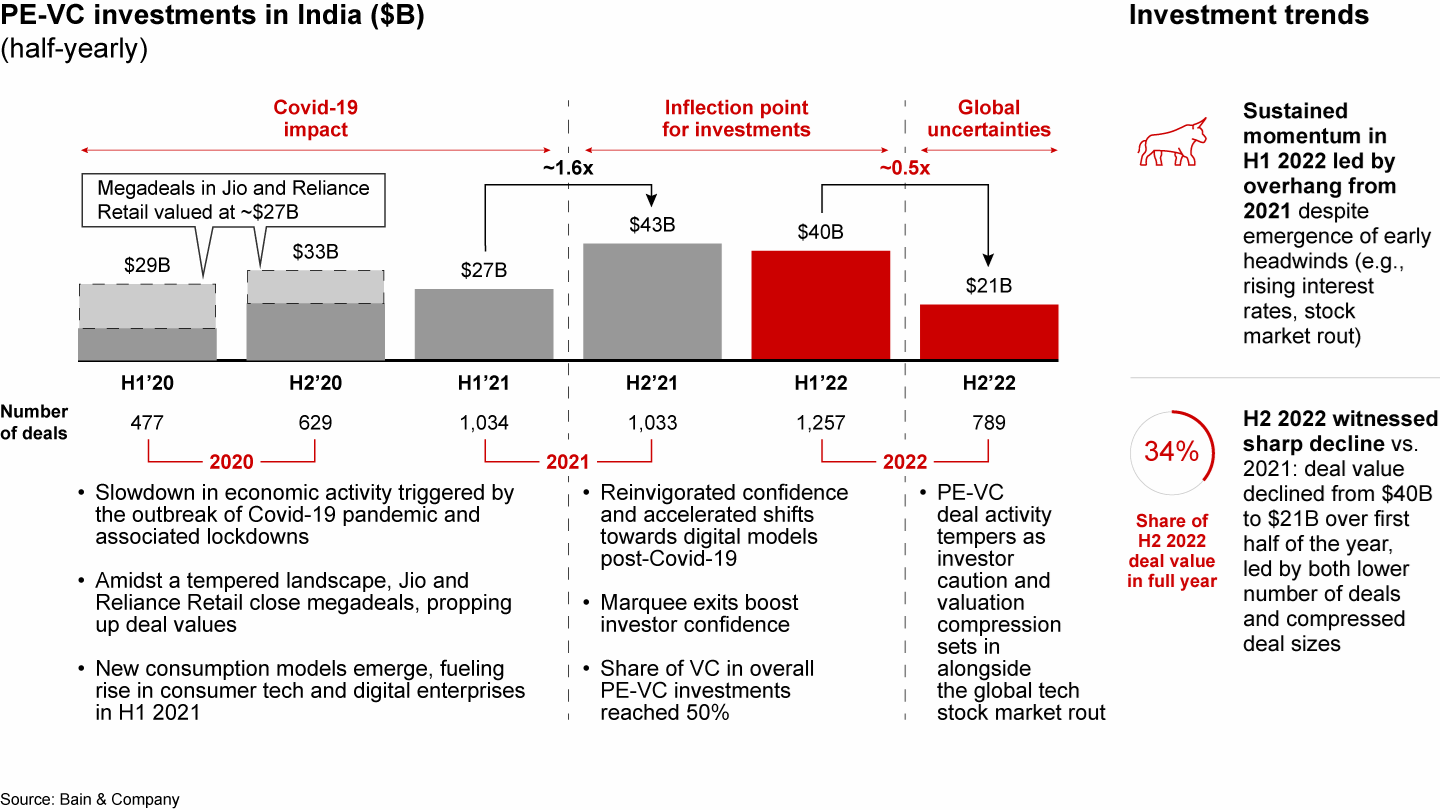
Investment dip was led by significant decline in average deal size while deal volumes sustained momentum

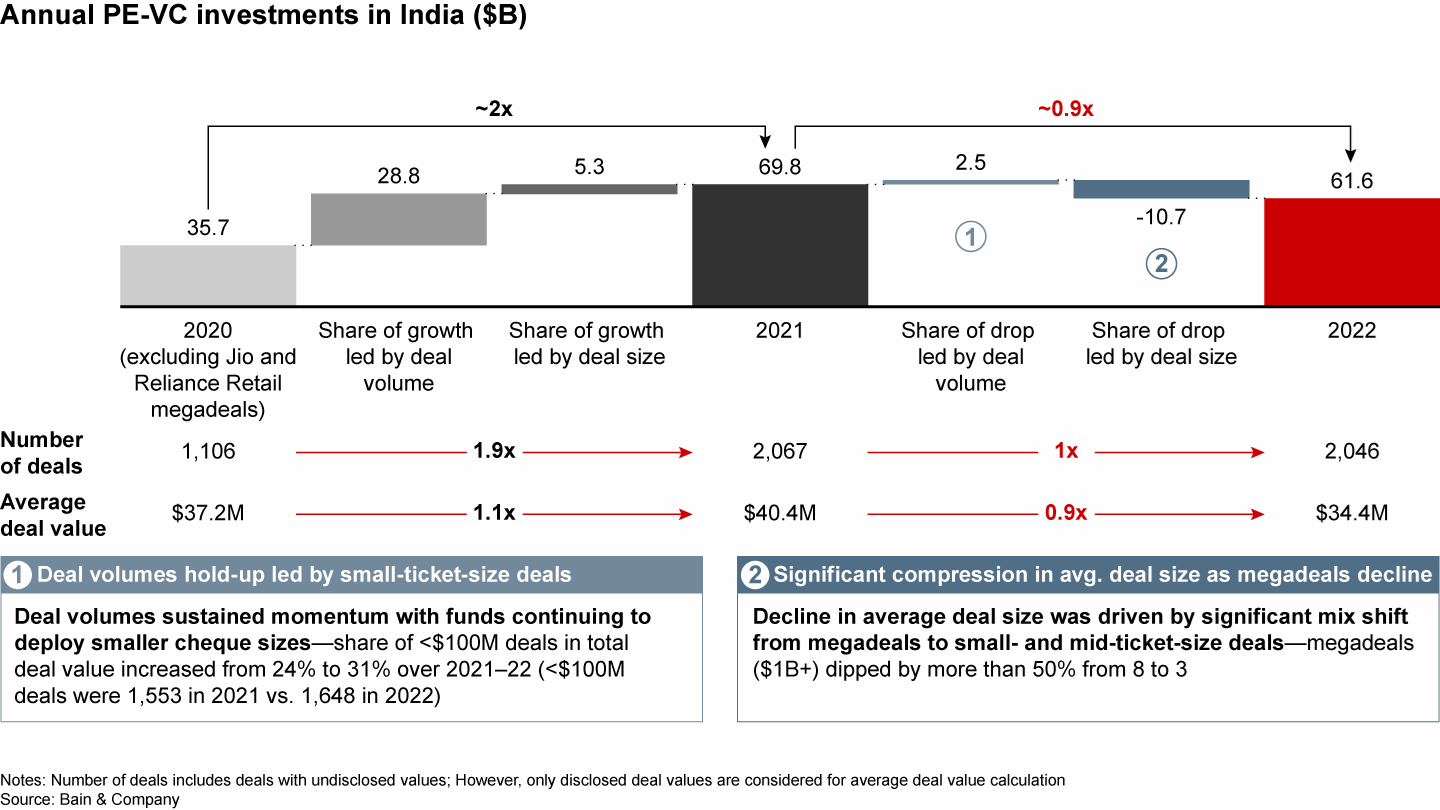
Momentum in deal volume was led by expansion in smaller ticket-size deals while $1B+ “megadeals” reduced

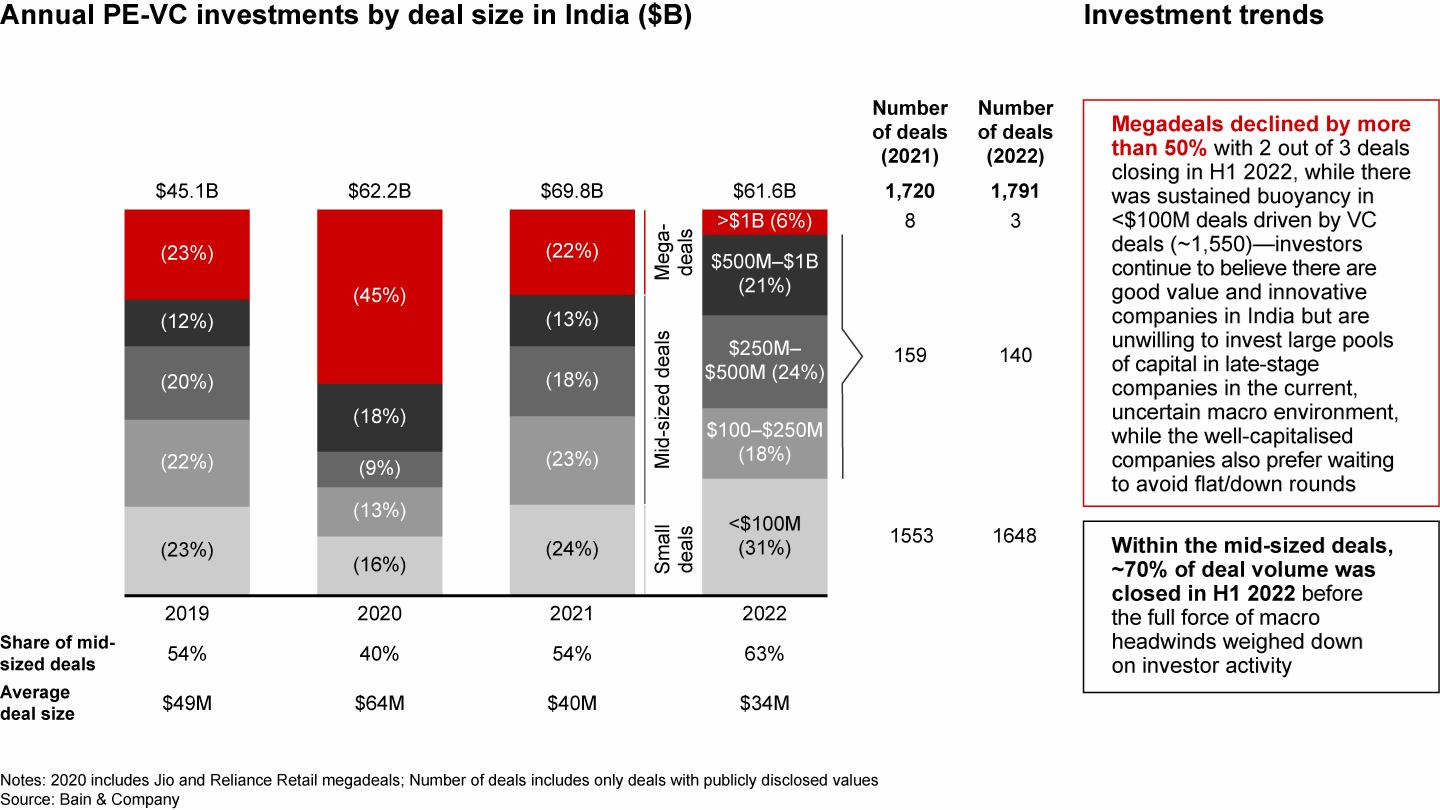
Amidst the PE-VC investments slowdown, traditional sectors showed resilient growth, driving material shift in sector mix away from consumer tech and IT

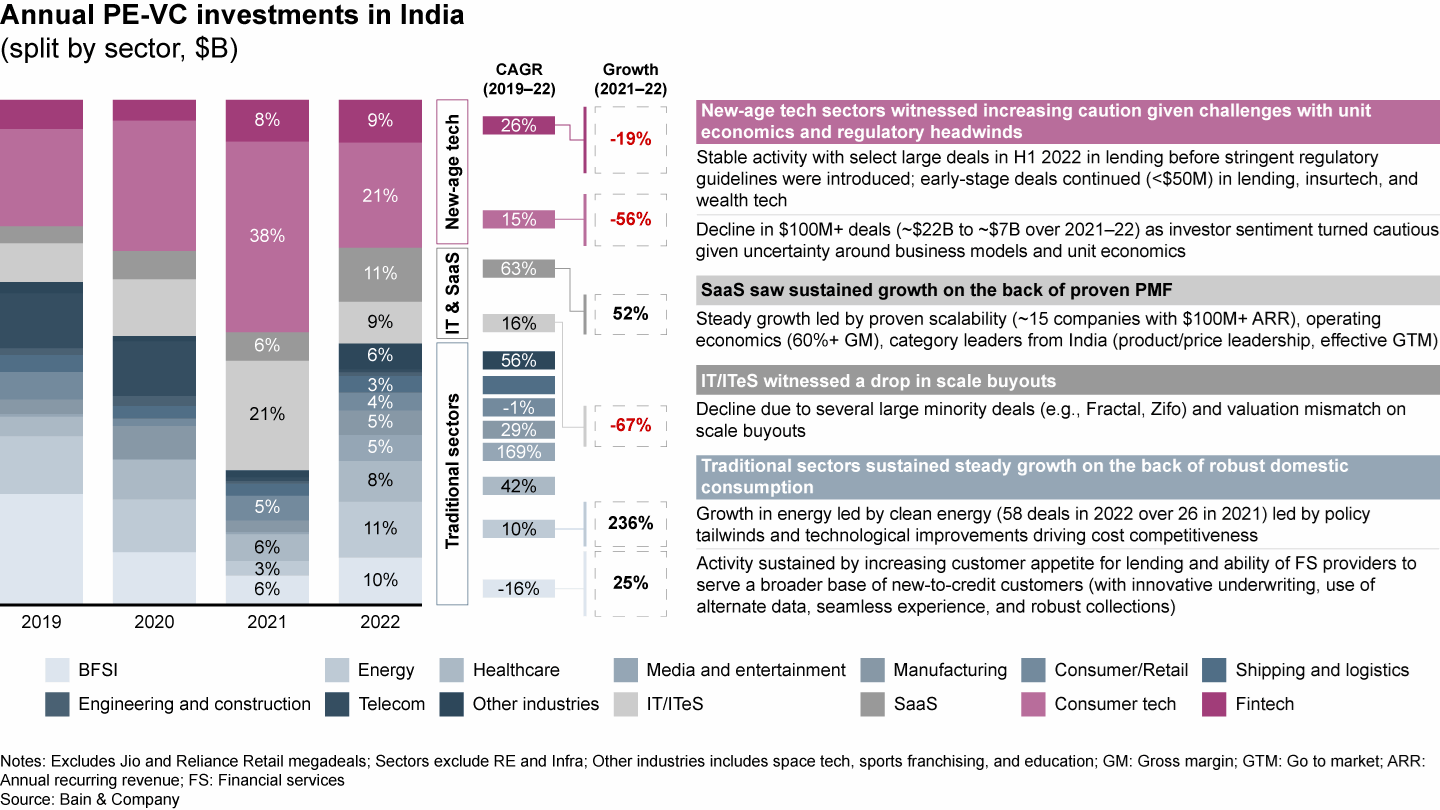
Similarly, mid-to-large-ticket-size deals witnessed significant shift in interest from consumer tech to traditional sectors

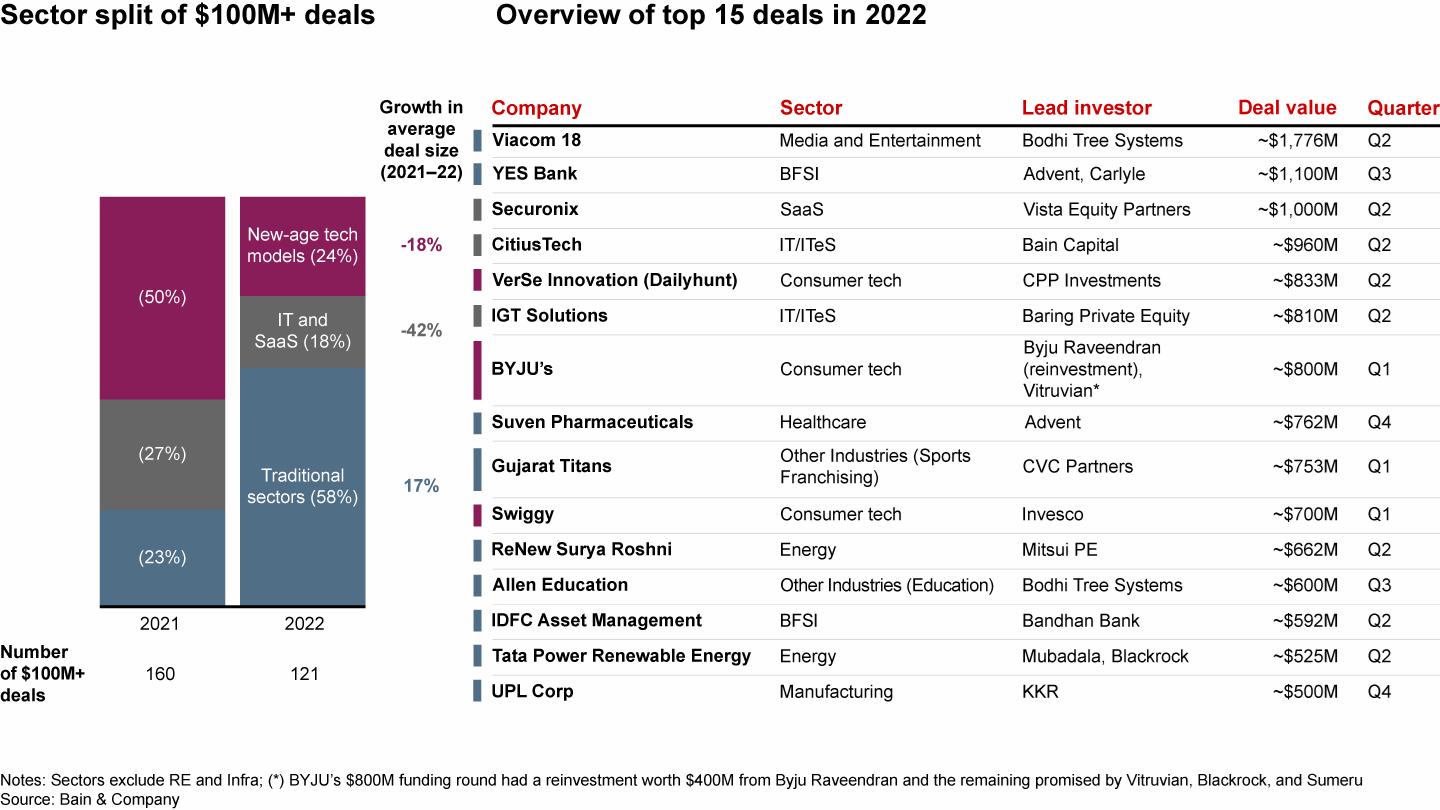
Dip in large-scale deals, especially in IT/ITeS, also reflected in dampened buyout activity—buyout share declined from 52% to 30% of PE deal value

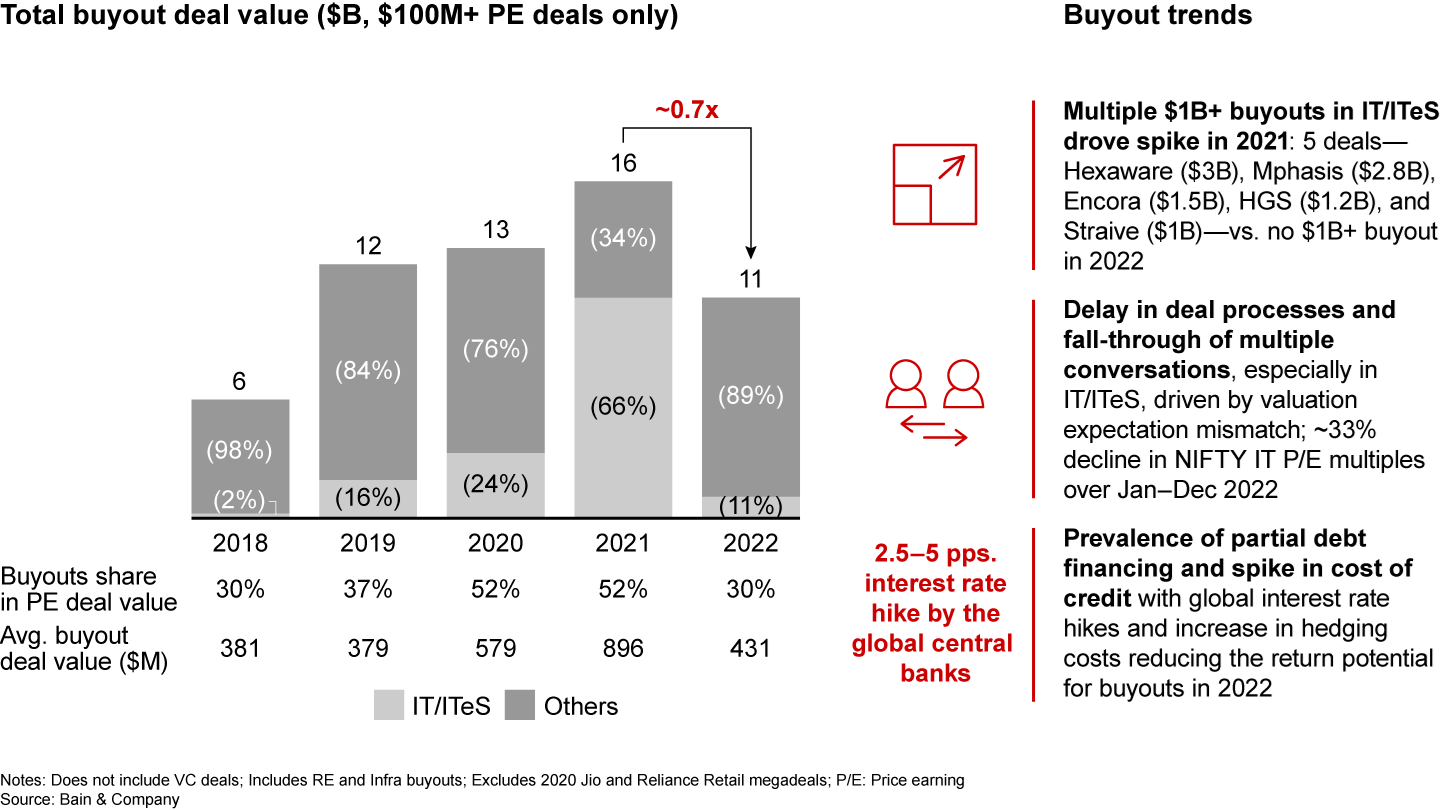
Exit activity tapered across all modes of exit in 2022 as investors, strategics focus on value creation, cash conservation

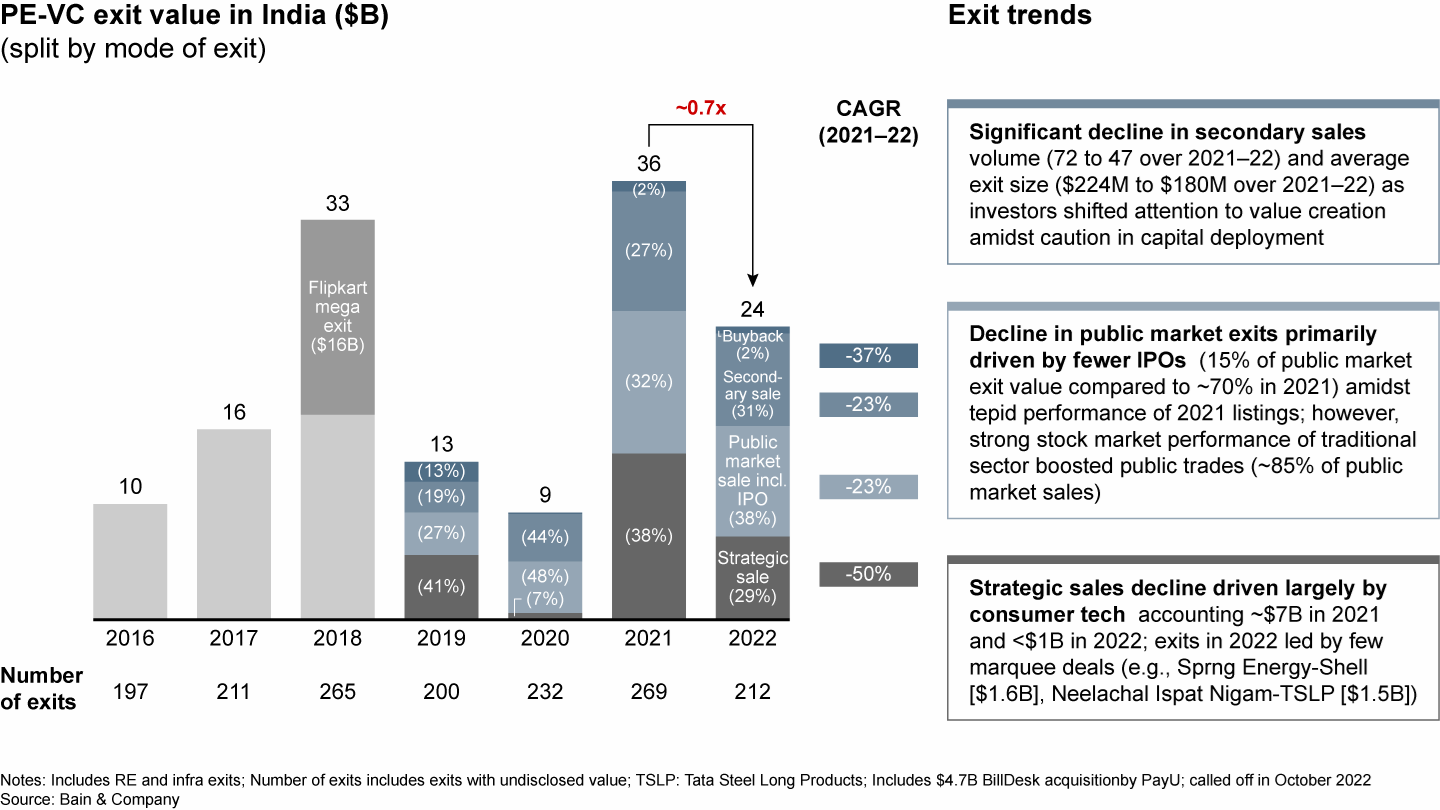
Share of IPOs within public market exits declined from ~70% to ~15% over 2021–22, resilient stock markets boosted public trades for traditional sectors

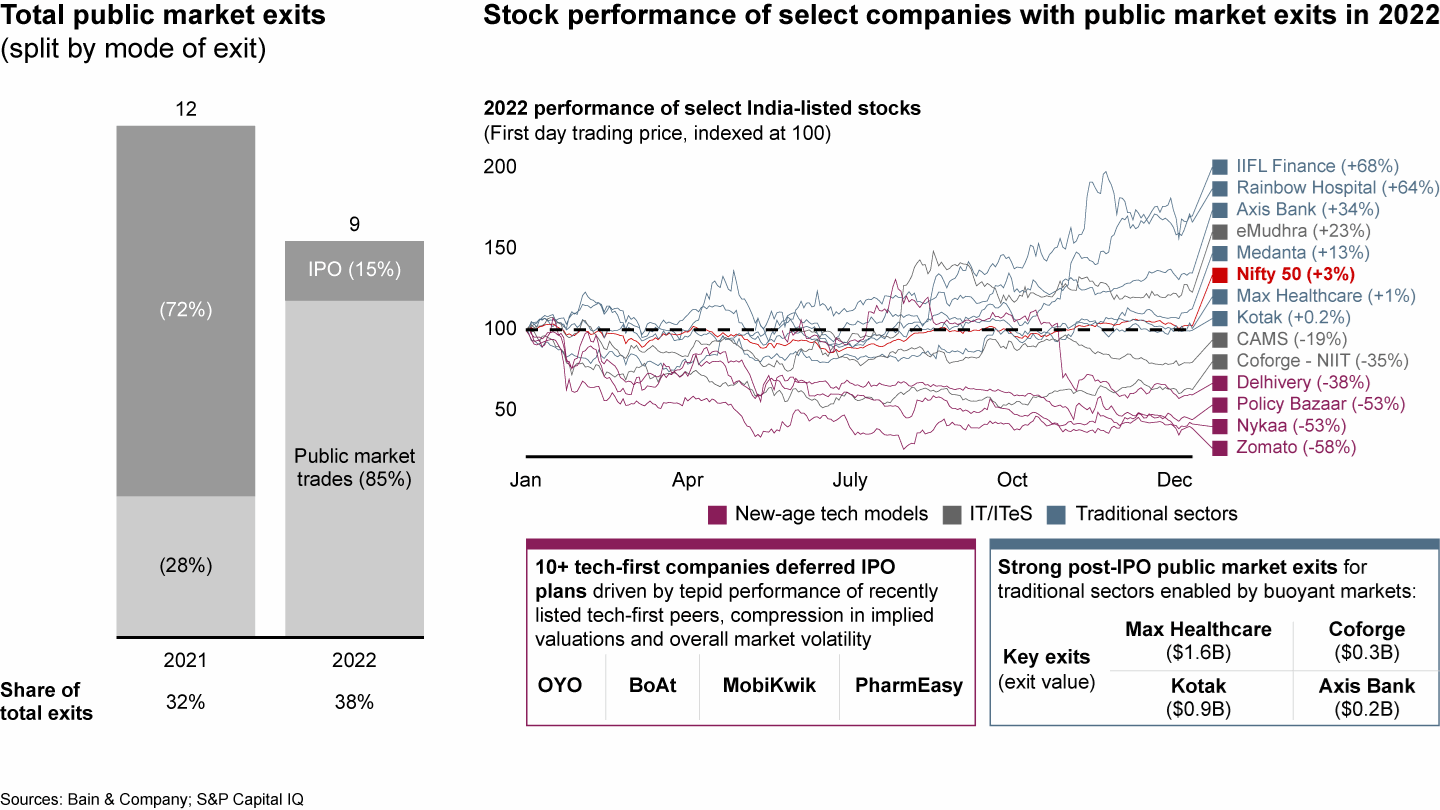
Consumer tech exit value declined sharply in 2022 while healthcare and manufacturing saw the largest increase

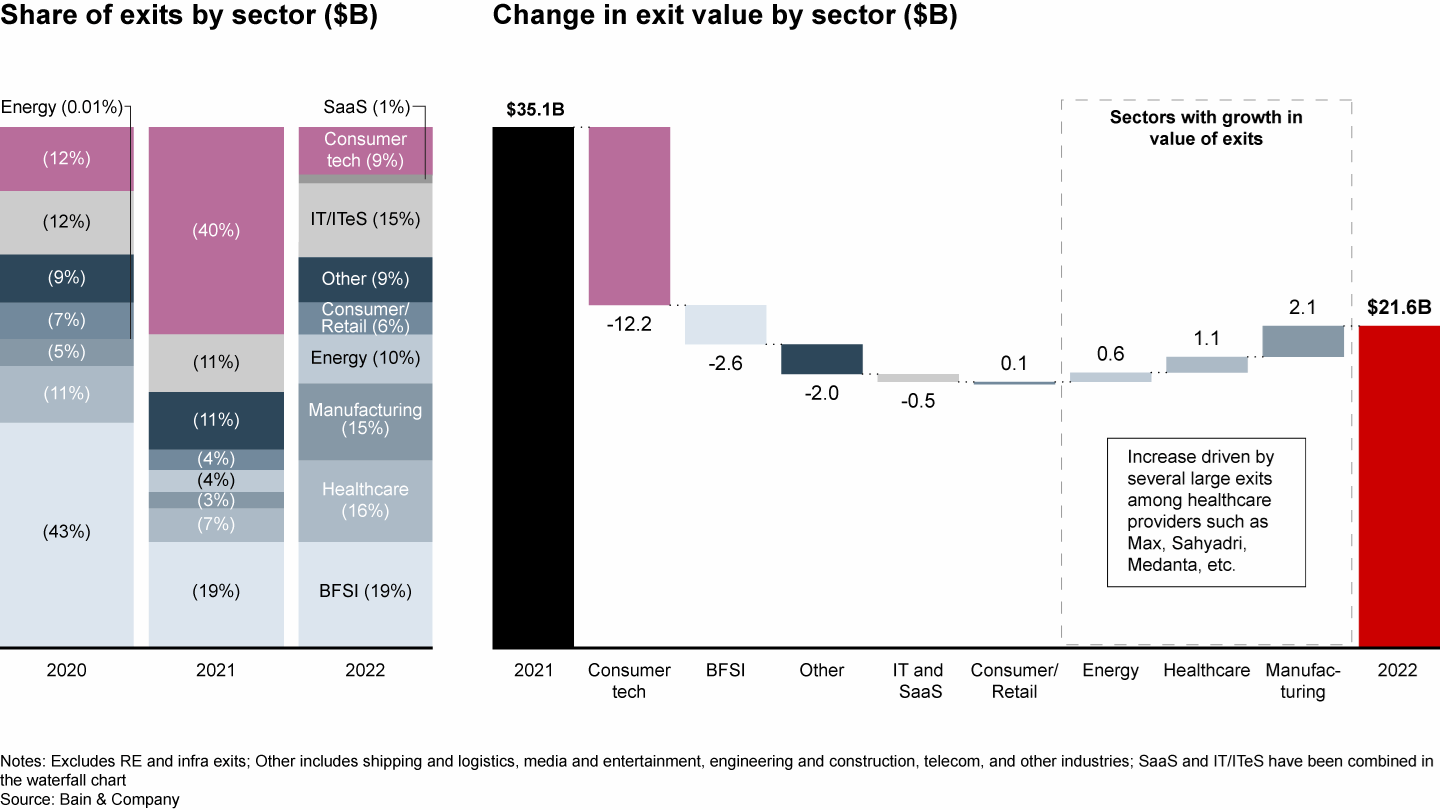
Traditional sectors also dominated large exits ($100M+) in 2022

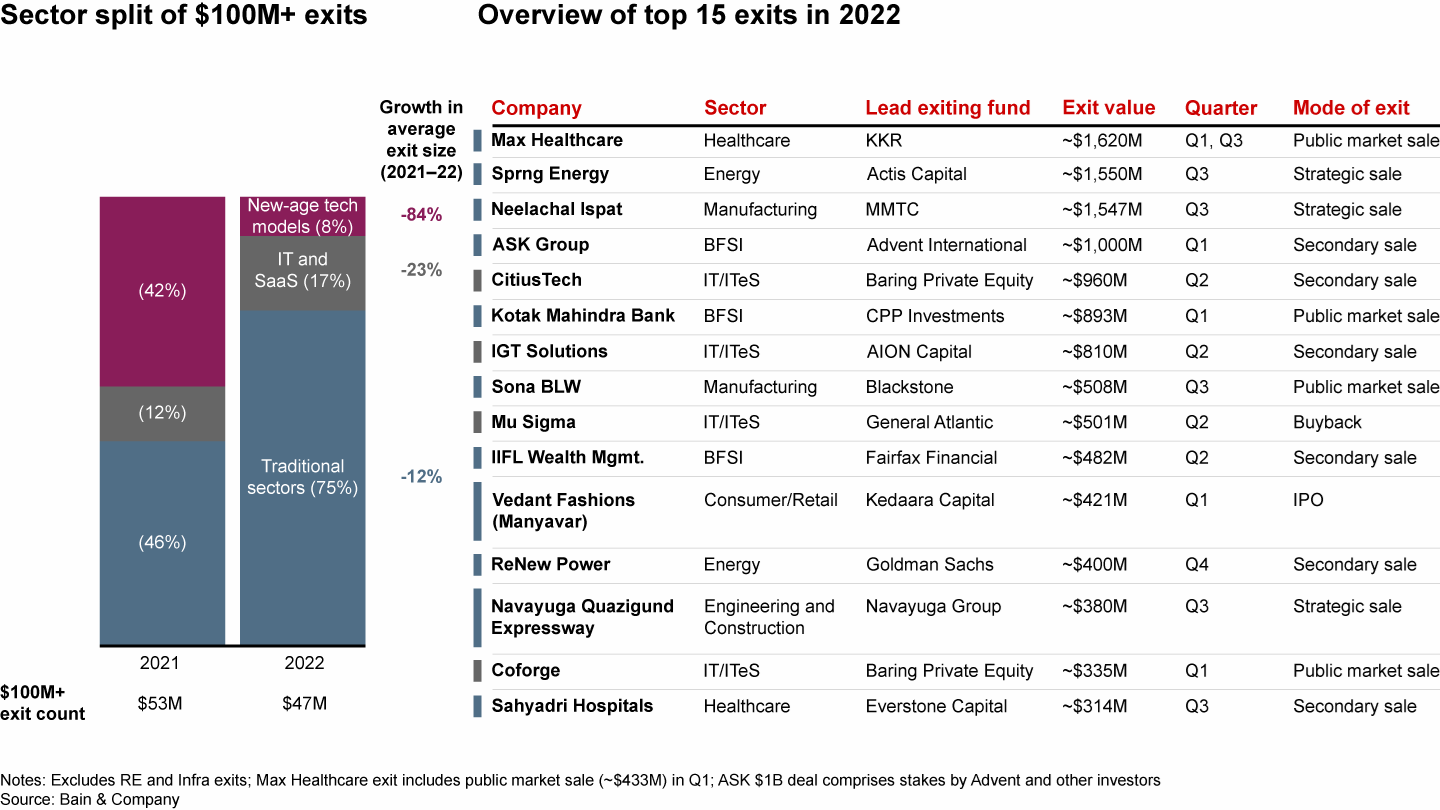
Sectors in focus: BFSI and healthcare
BFSI
- India’s BFSI and fintech sectors have seen a resurgence in interest, with deals worth over $5 billion and $4 billion, respectively, in 2022. Together, they account for 18% of the country’s PE-VC investments, driven with growth in overall outstanding credit, which has doubled since 2014 to reach $2 trillion.
- Growth is driven by a large untapped credit population, increasing consumption by a growing middle class, openness to credit, and an increasing ability of players to offer credit through offline and digital expansion.
- NBFCs have been at the forefront of this trend, expanding their share of credit from 21% to 27% in 2022, consolidating share from public banks in underserved markets. NBFCs have grown share in segments such as personal loans, consumer durables, 2W and 3W finance, and micro small and medium enterprises (MSME).
- NBFCs have expanded coverage to new-to-credit customers that are underserved by banks and built expansive on-ground networks in tier 2/3 cities and rural areas that further enable cross-selling opportunities. These growth initiatives are supported by innovative underwriting and collection processes to streamline debt recovery.
- The NBFC model’s strength is evident from public market performance of multiple listed players, such as IIFL and Cholamandalam, which outperformed market indices.
- Fintech has seen a sustained deal momentum on the back of innovations in lending (seamless customer journeys, instant disbursals, innovations with no-cost EMI, etc.), with the payments ecosystem also moving towards integrating lending play, expected to drive growth, while the regulations around lending continue to evolve.
Healthcare
- 2022 was a year for marquee healthcare exits, which expanded to about 16% of India’s exit value at $3.5 billion, despite forming just about 8% of total PE-VC investments. Of this, nearly 85% of exits were driven by health providers across public market exits, IPOs and secondary sales.
- Large exits were dominated by KKR-Max Healthcare exit of $1.6 billion, Everstone’s exit from Sahyadri Hospitals, and the IPOs of Medanta and Rainbow Hospitals.
- Healthcare provider exits returned in 2022 after previous exit cycles in 2015–2016 and 2019, with high volume of exits at increased multiples. The median MOIC stayed above three in a year that saw large multi-specialty provider exits on the back of strong value creation initiatives.
- Large multi-specialty players are leaning on both greenfield (Tier 2 penetration) and brownfield expansion (bed capacity augmentation, consolidation with other players) to increase scale. Further, patient revenue growth has been driven by the resurgence of elective procedures post-pandemic, deeper service mix with a focus on creating centers of excellence at the sub-specialty level, bolstering of ancillary revenue streams, and expansion of digital channels.
- Cost reduction measures undertaken during the height of the Covid-19 pandemic, such as changes in doctor compensation models, reduction in material cost, and tech integrations, have led to significantly improved EBITDA margins for market leaders.
- Pharma saw lower deal traction this year but is expected to flex strength, amidst global sourcing diversification pivots from China, regulatory support with India’s National Biopharma Mission, anticipated expiration of patents, and deepening talent in India’s Pharma ecosystem.
PE-VC investments in BFSI and fintech have recovered post-Covid-19, led by increasing digitisation and innovation

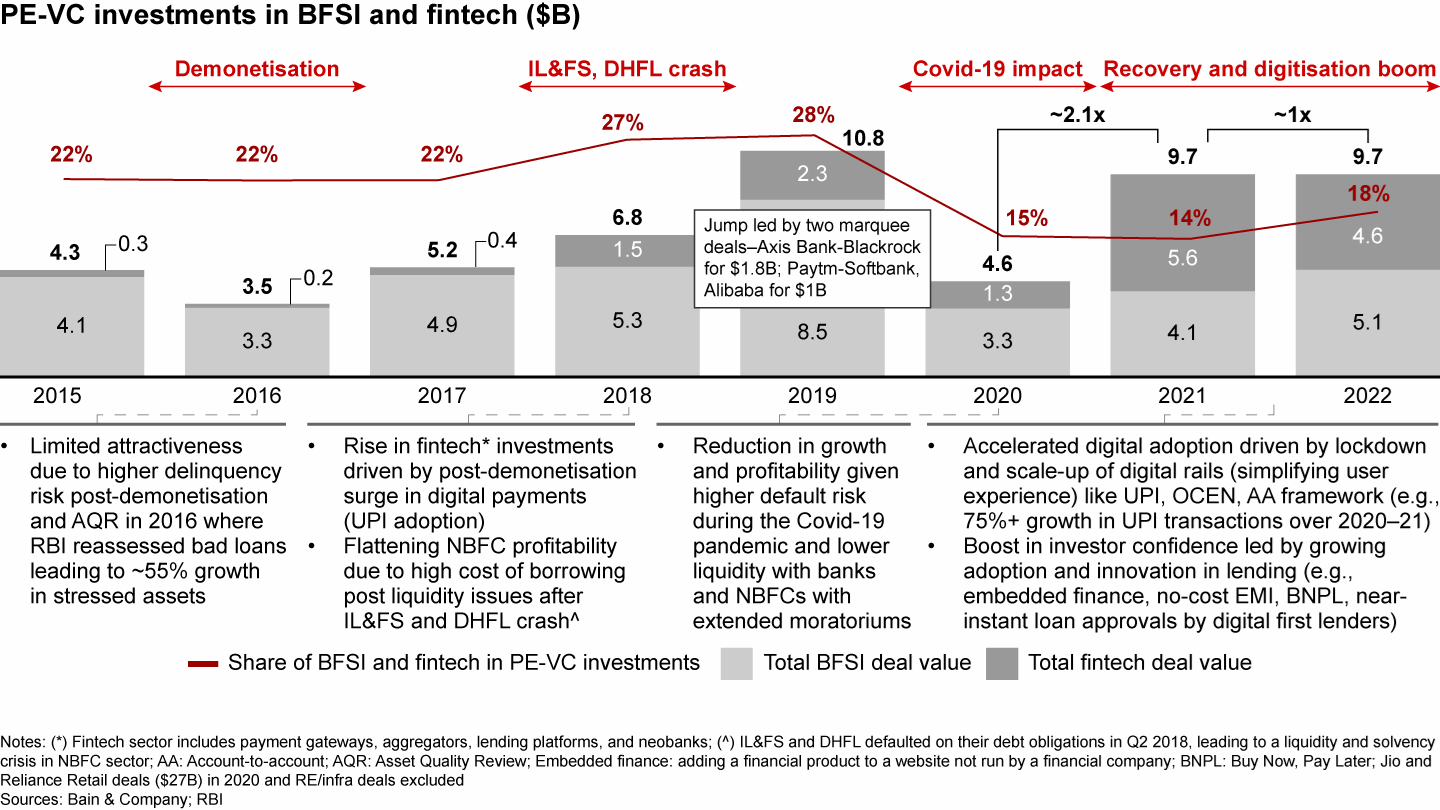
Sustained momentum in investments in NBFCs with rising demand for lending and value creation by NBFCs

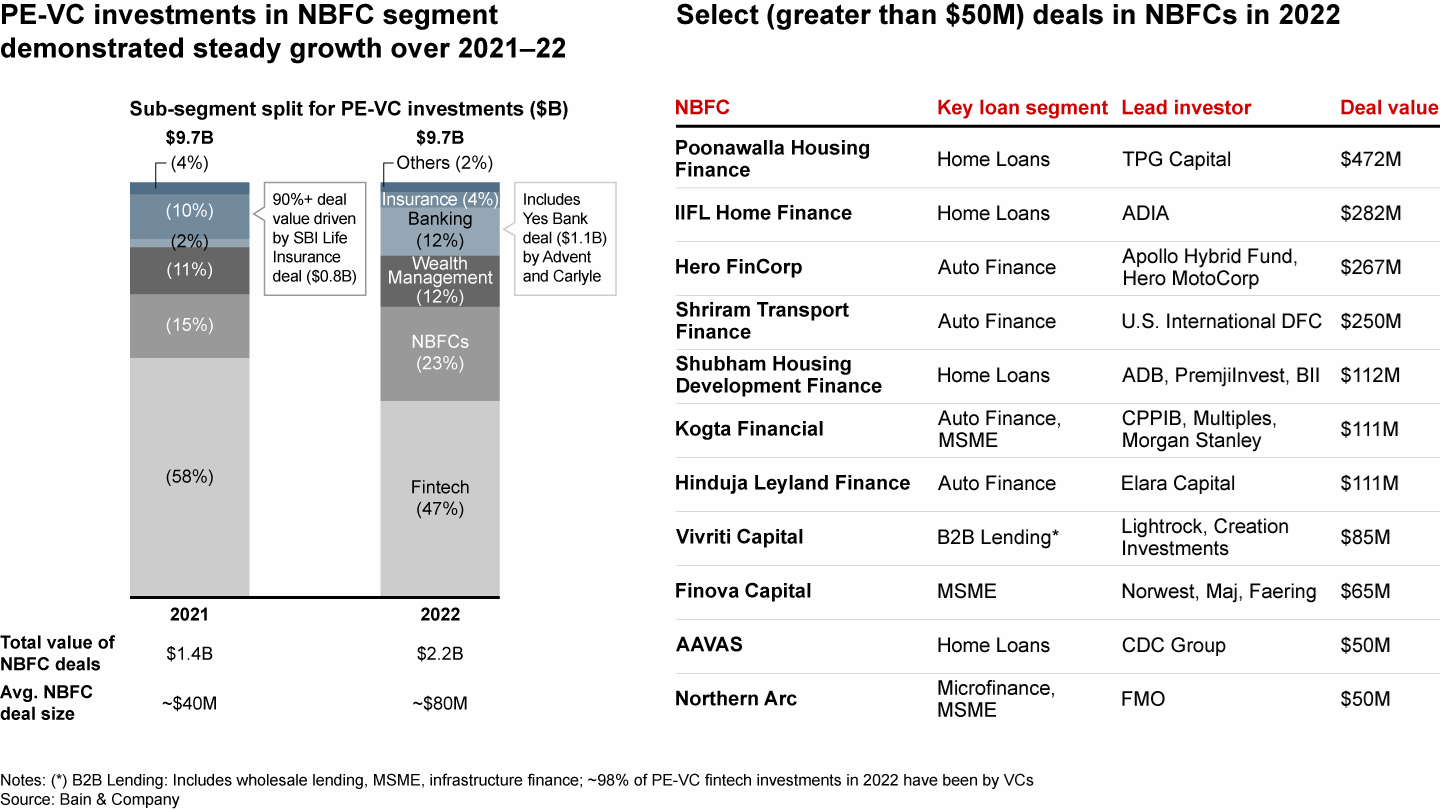
Investor confidence in NBFCs sustained with share gain, especially from public banks

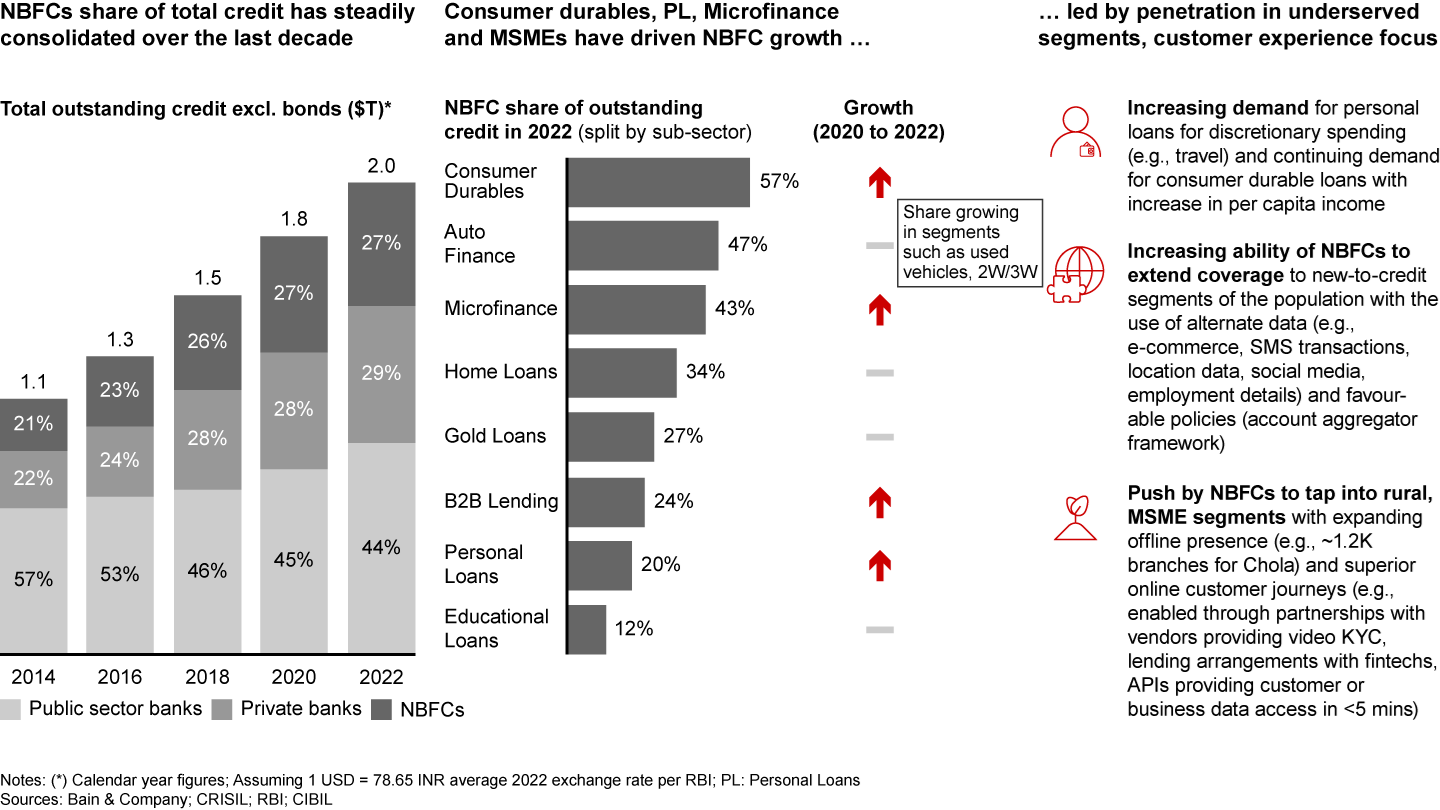
NBFCs have driven value creation across several themes, evident in their market performance

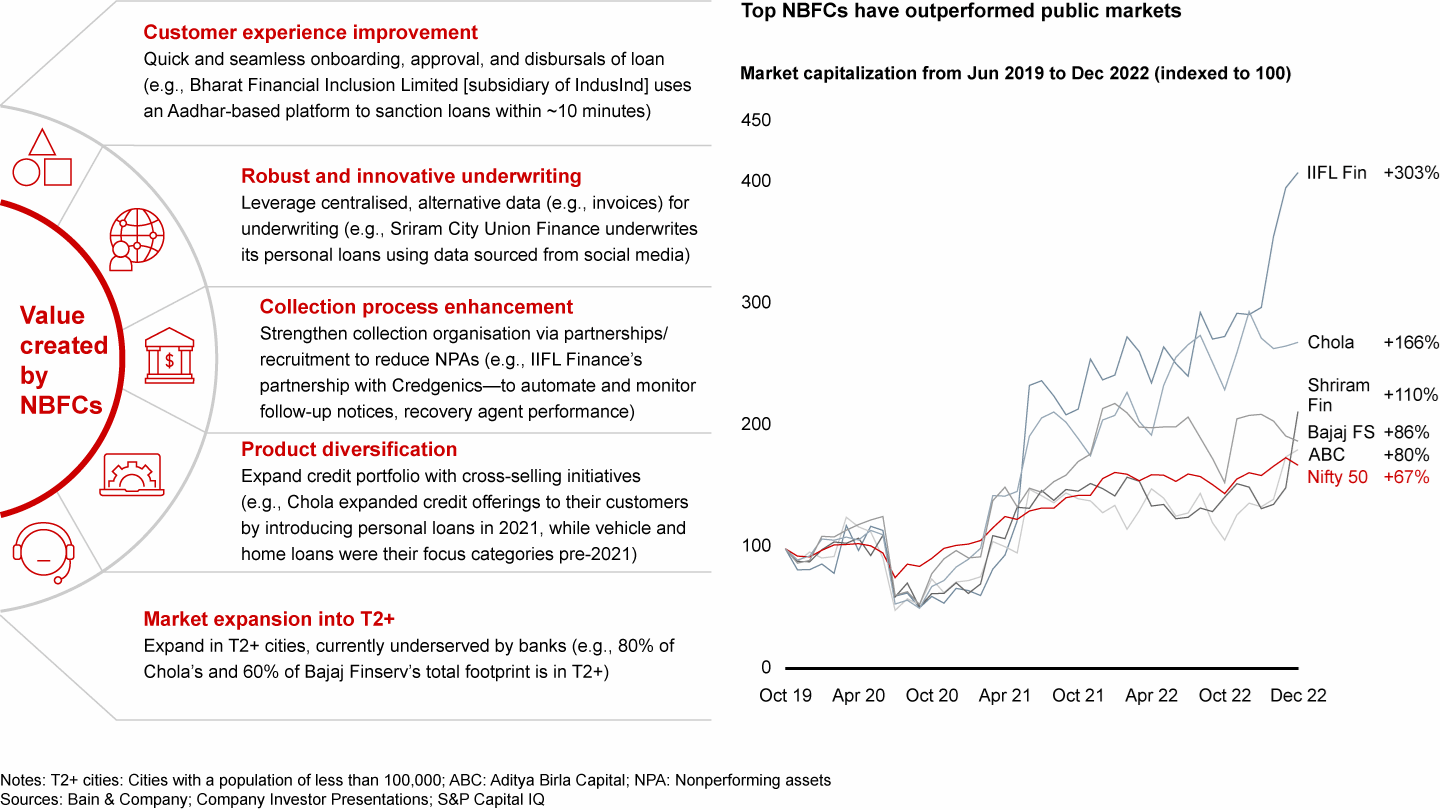
Fintech witnessed sustained deal momentum driven by lending, fintech infra and emergent wealth, insurtech models, despite growing regulatory scrutiny

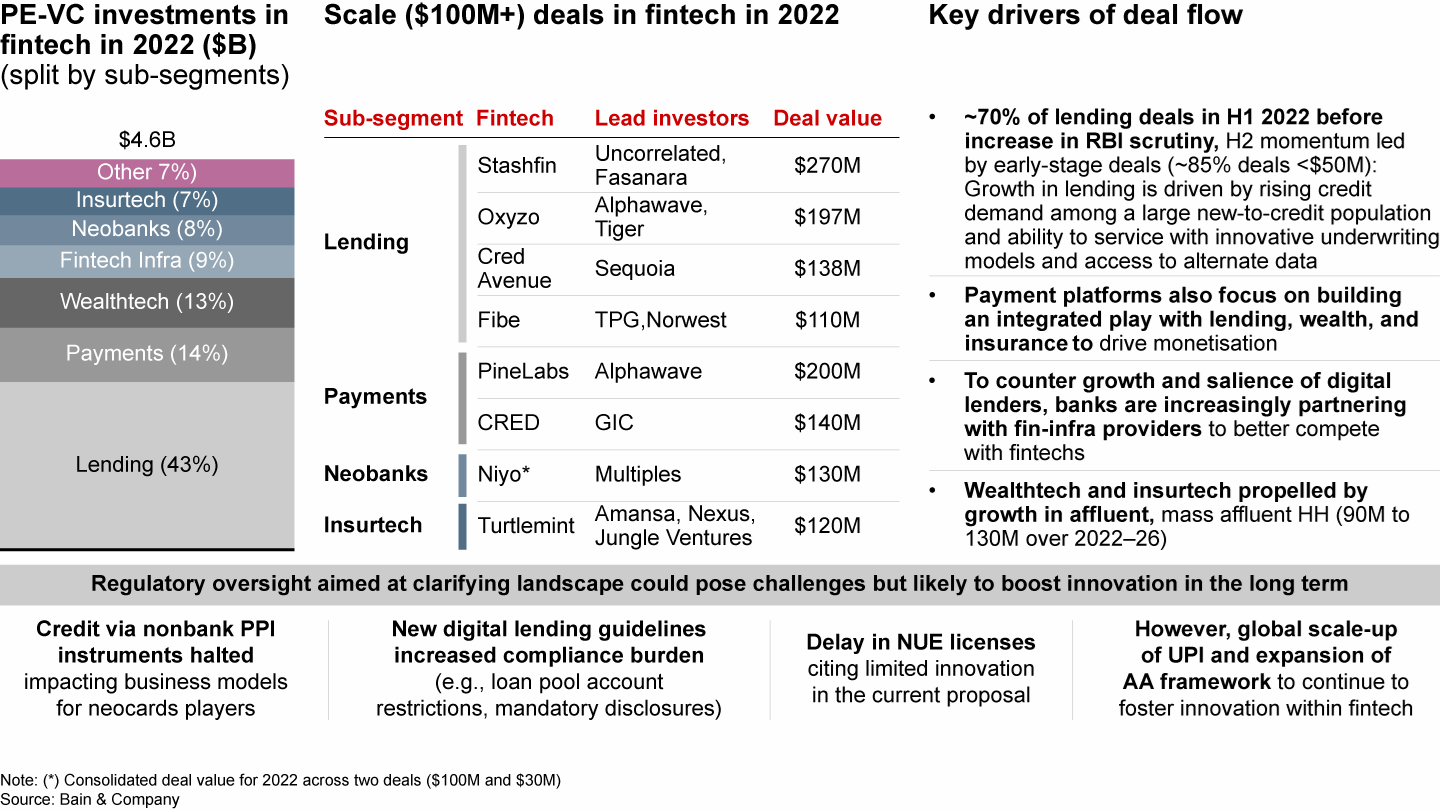
PE-VC investments in healthcare have gained from Covid-19 tailwinds and maturing ecosystem

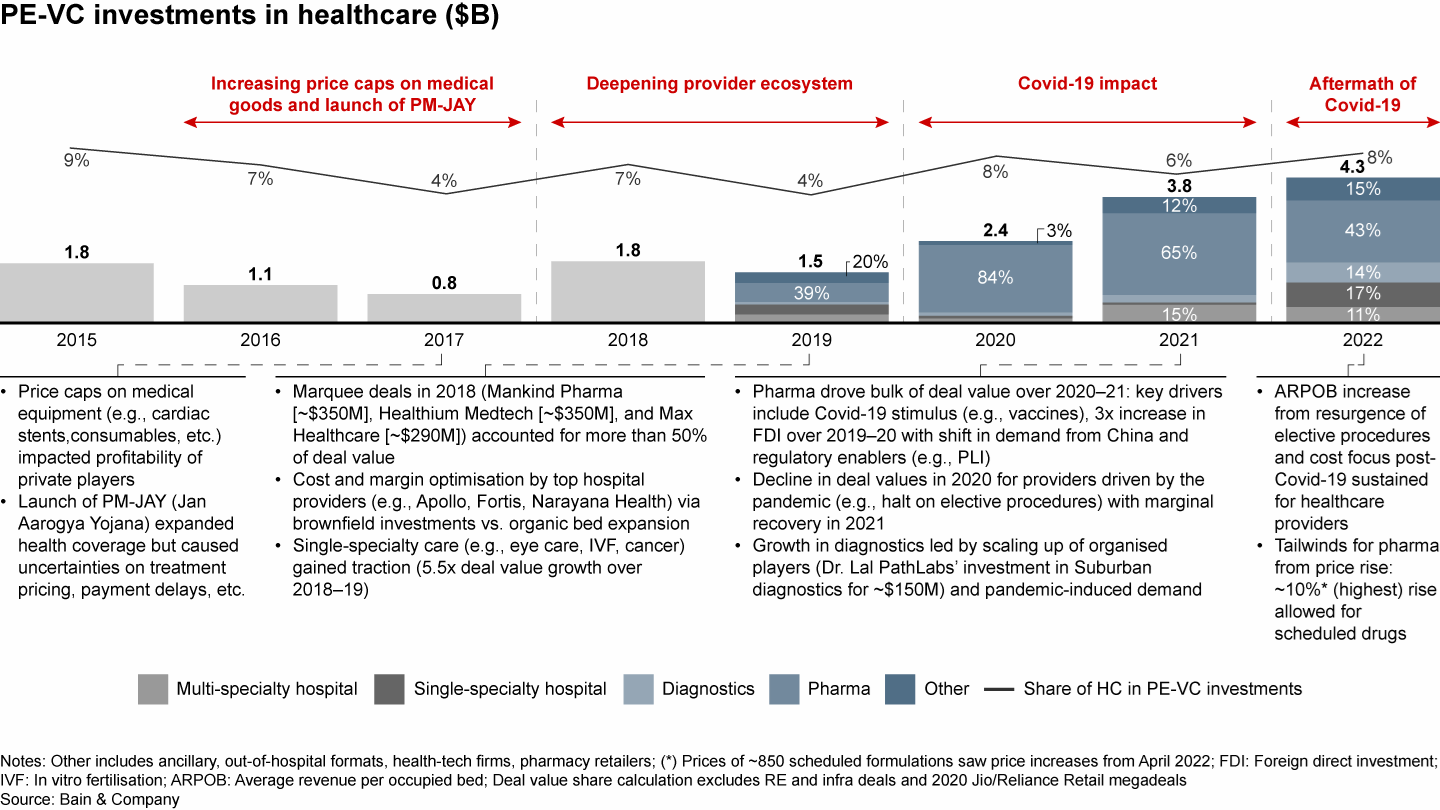
Healthcare accounted for ~16% of total exits in 2022, despite forming only ~8% of total investments, driven by multiple marquee provider exits

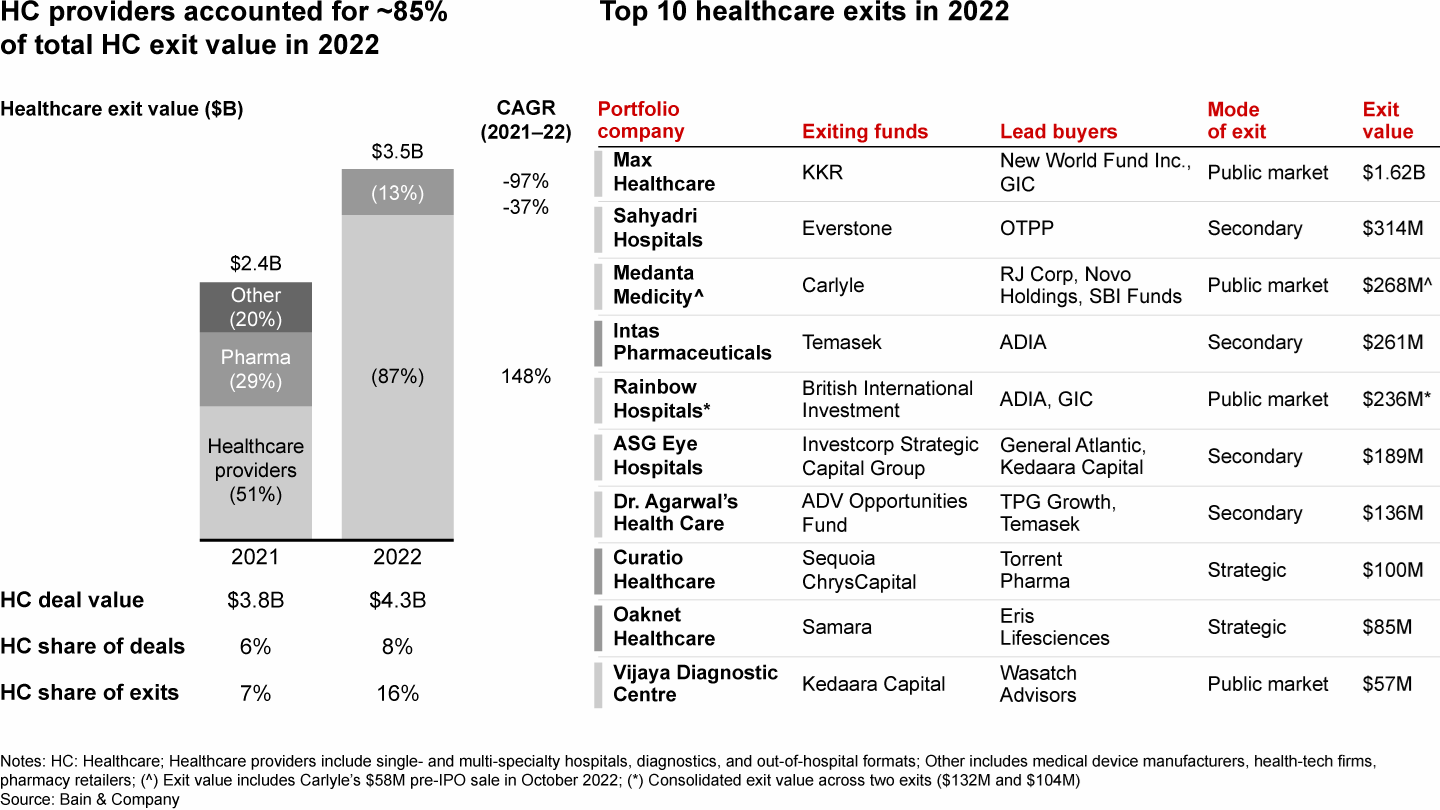
Provider exits typically witness a cyclical pattern in investor returns

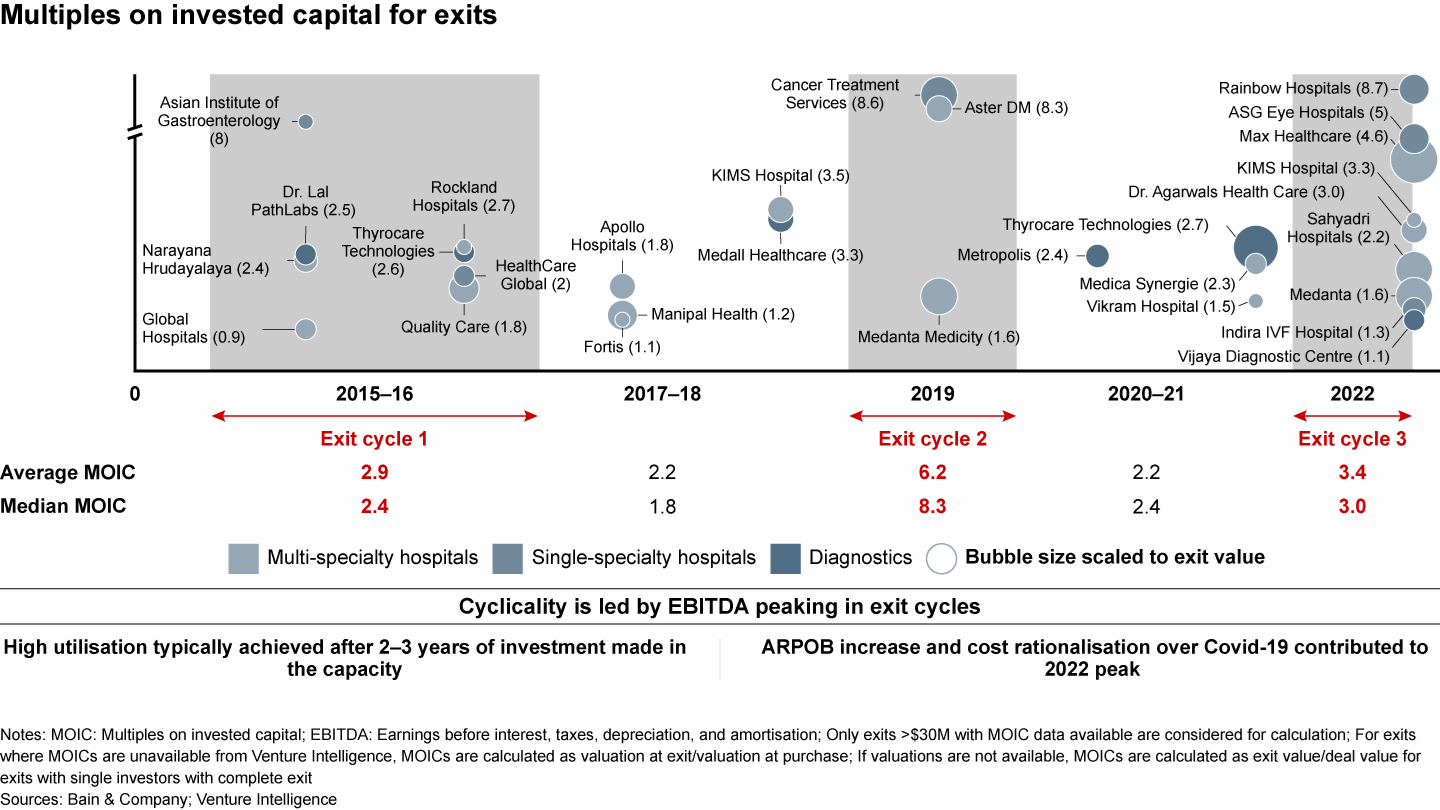
Healthcare providers have outperformed the public stock market driven by focused value creation initiatives and macro tailwinds

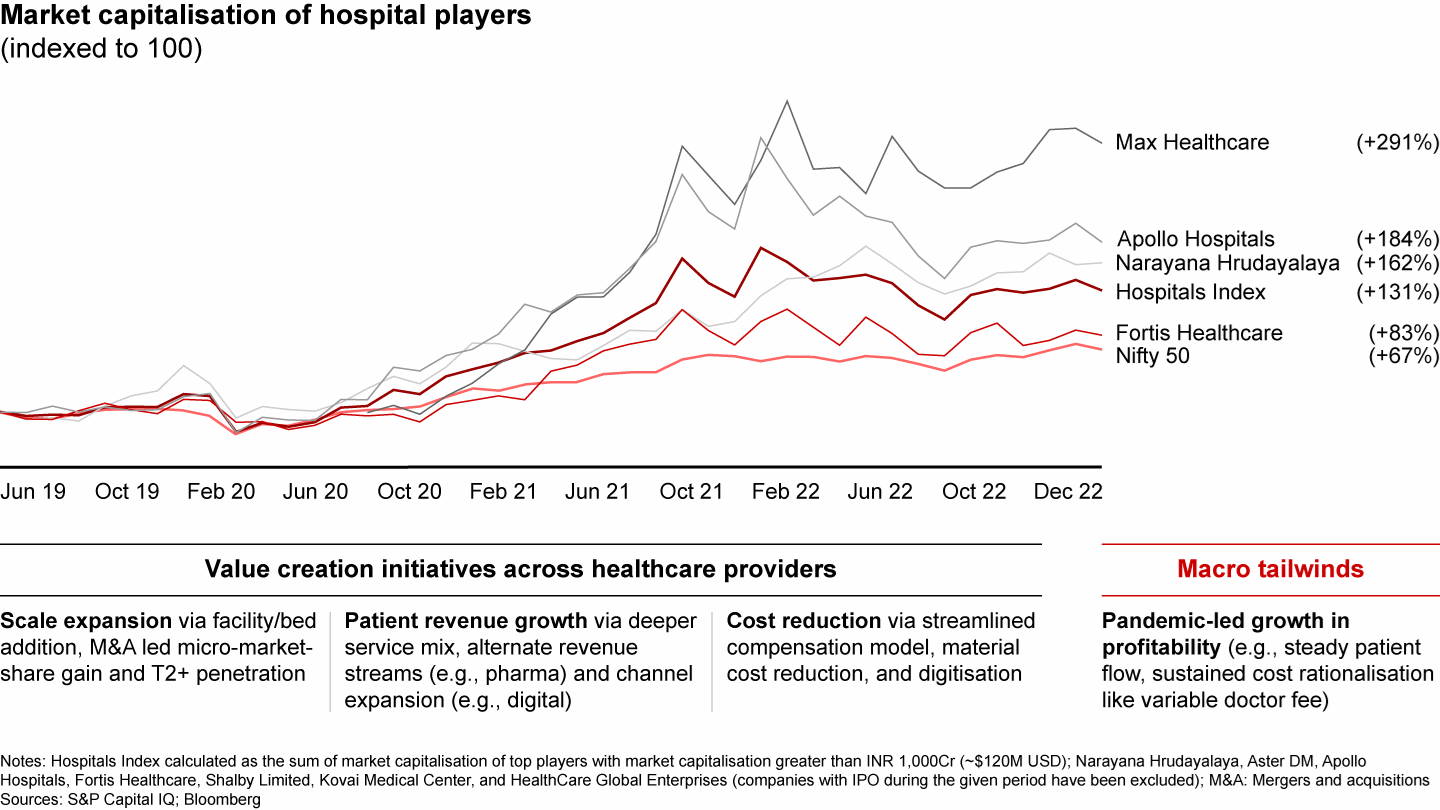
2022 saw sustained focus on organic and inorganic scale expansion across healthcare providers

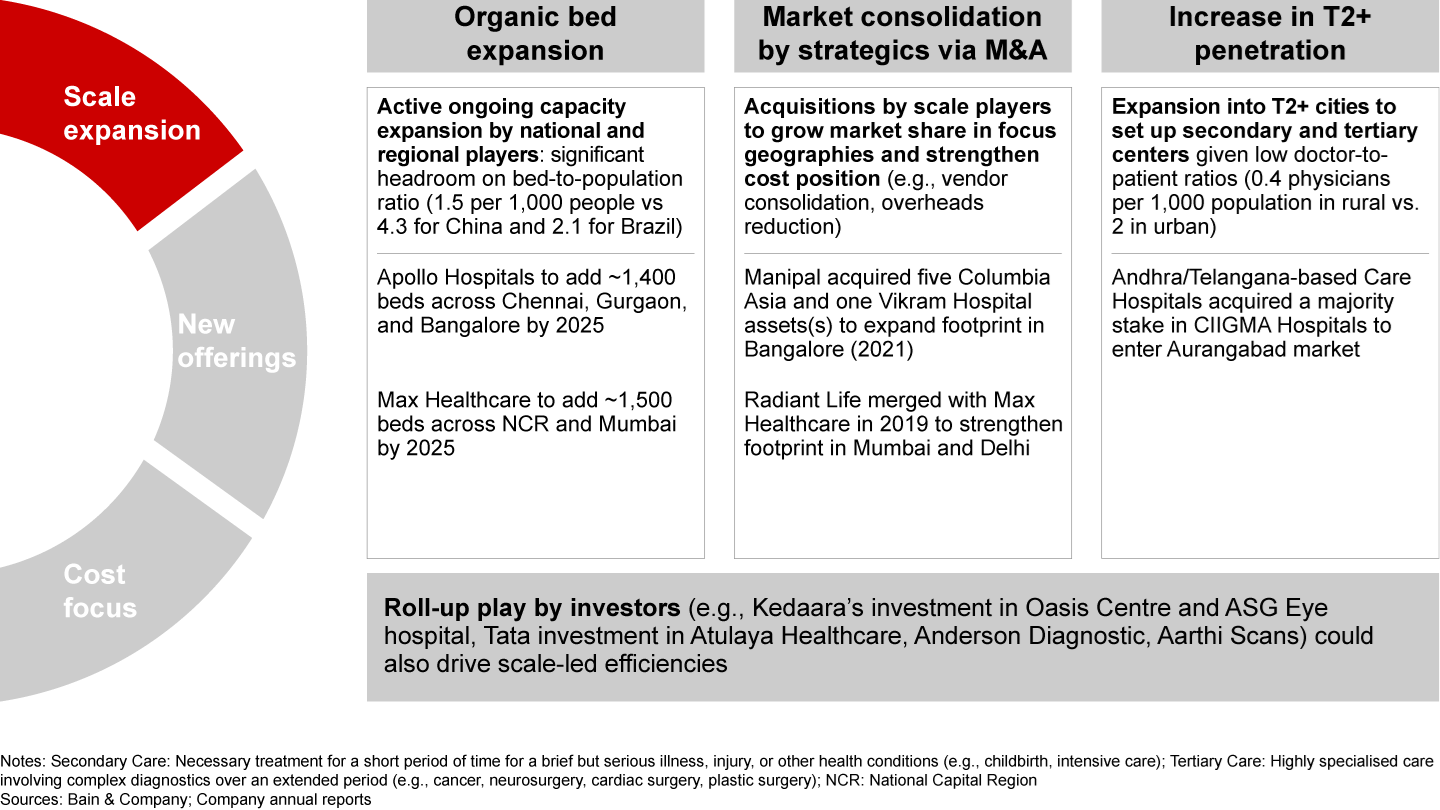
Continued efforts at patient revenue growth via new offerings during and after the pandemic have propelled growth for providers

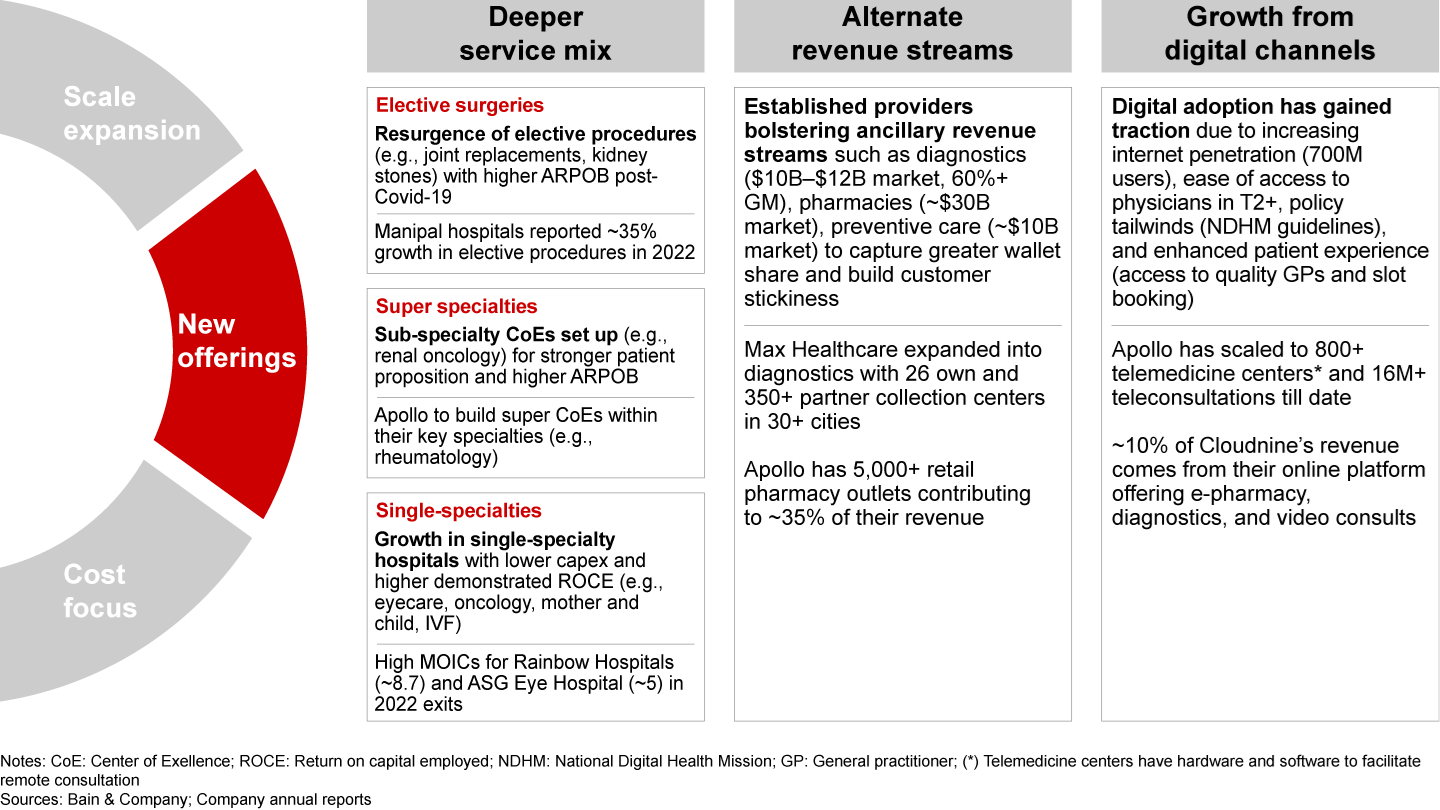
Providers are driving focus on better cost management to sustain margin upsides achieved during Covid-19

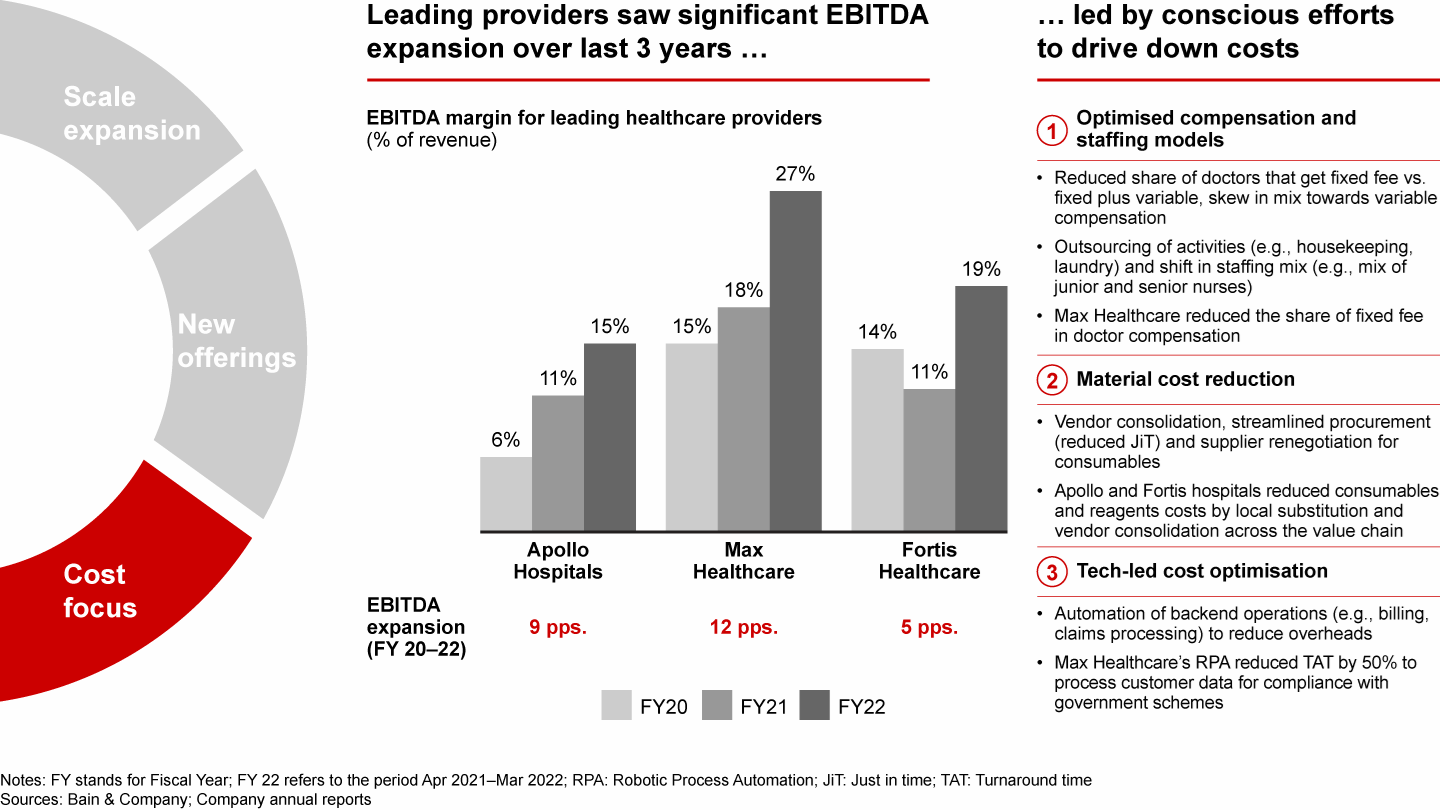
While pharma saw a slowdown in PE activity in 2022, long-term outlook is positive, led by a confluence of tailwinds

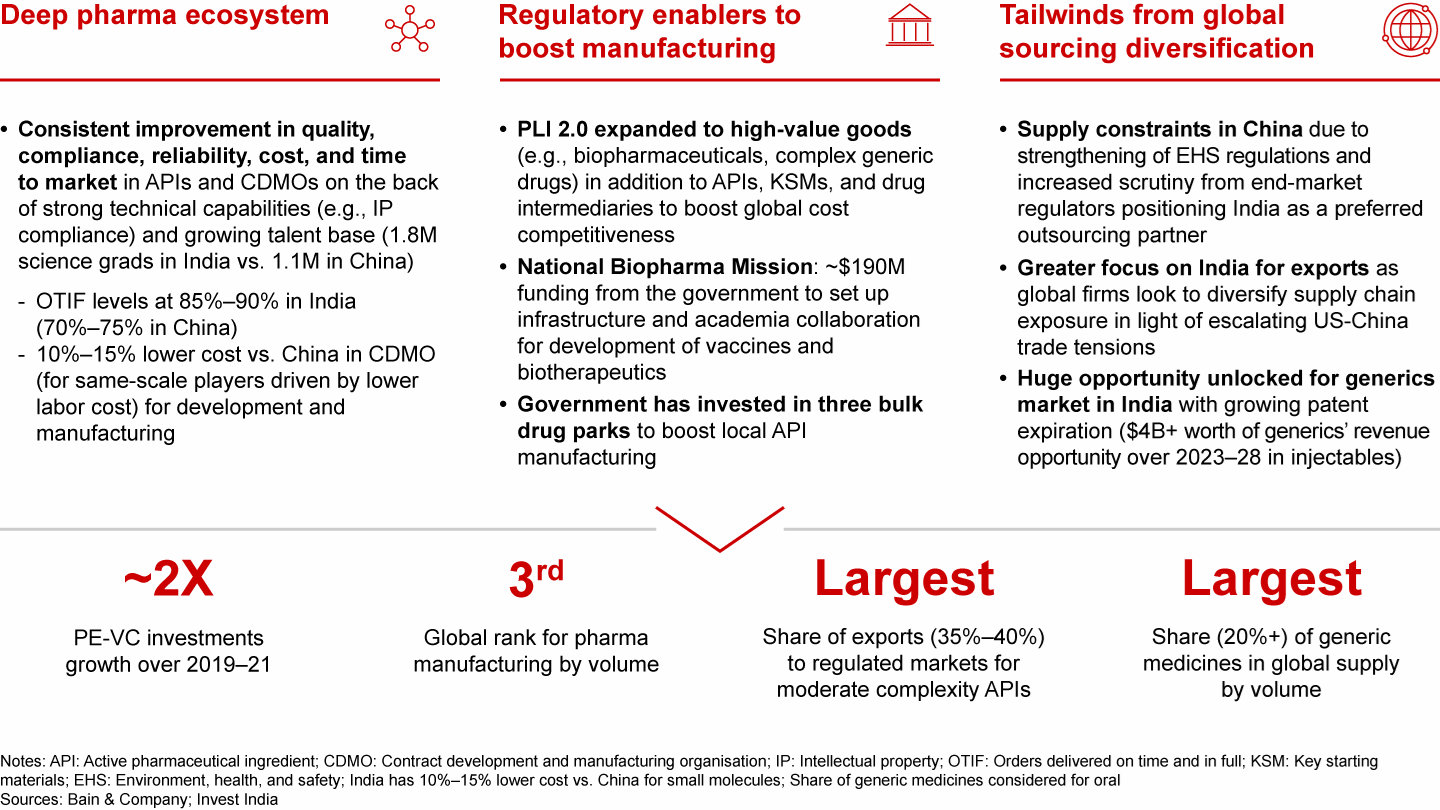
ESG: Moving from mind-share to wallet-share
- ESG investing witnessed a sharp uptick in 2022, in a signal of a move from “mind-share” to “wallet-share.” Investments in ESG assets increased from 5% of overall investment value to 13% over 2021 to 2022 with about a 2.4x increase in deal value to nearly $7.9 billion.
- Extent of ESG integration with the investment philosophy varies across funds—some funds have ESG framework for their portfolio companies and support them with benchmarks and/or best practices, while select diversified funds have sectoral focus on ESG; some impact investors have dedicated ESG funds; and lastly, there are a few pure-play ESG investors.
- ESG investment is largely concentrated in clean energy (solar, wind power, etc.) and electric mobility, especially EV manufacturing—these themes contributed to approximately 90% share of $19.2 billion invested in ESG across 2018 to 2022.
- Clean energy saw robust deal activity in 2022 propelled by rising cost competitiveness of solar compared to thermal power—regulatory headwinds for coal power, government investment into solar infrastructure driven by COP27 and production linked incentives (PLI) to boost domestic manufacturing of solar photovoltaic (PV) modules continue to enable a favourable landscape for solar.
- Electric mobility segment has grown at approximately 150% CAGR over 2018 to 2022, driven by an increasingly favourable TCO—EV penetration is likely to go up significantly in the next 5 years to 18% to 20% for 2W, about 25% for 3W (excluding e-rickshaws), and about 5% for 4W.
- While the maturing renewables sector has seen robust exits for marquee assets, consumer adoption of EVs still remains nascent. Further, as ESG investing picks up pace, the challenge of divergent frameworks and varied reporting needs to be addressed for investors to adopt a unified approach with a clearer view on value creation and exit opportunities.
Environmental, social, and governance investing is across three key themes: clean energy and electric mobility are the most salient

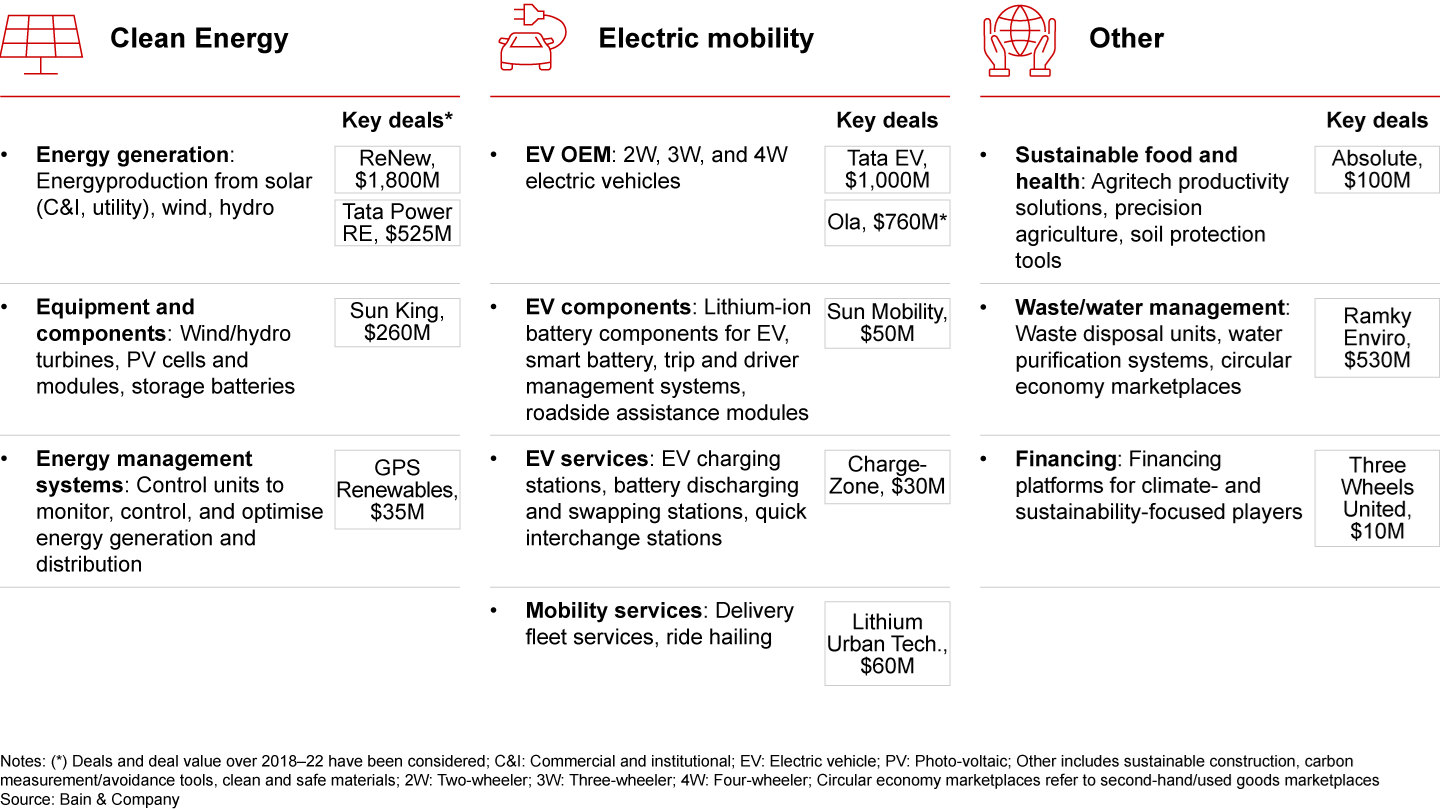
ESG transitioning from “mind-share” to “wallet-share” with ~2.4x growth in deal value over 2021–22

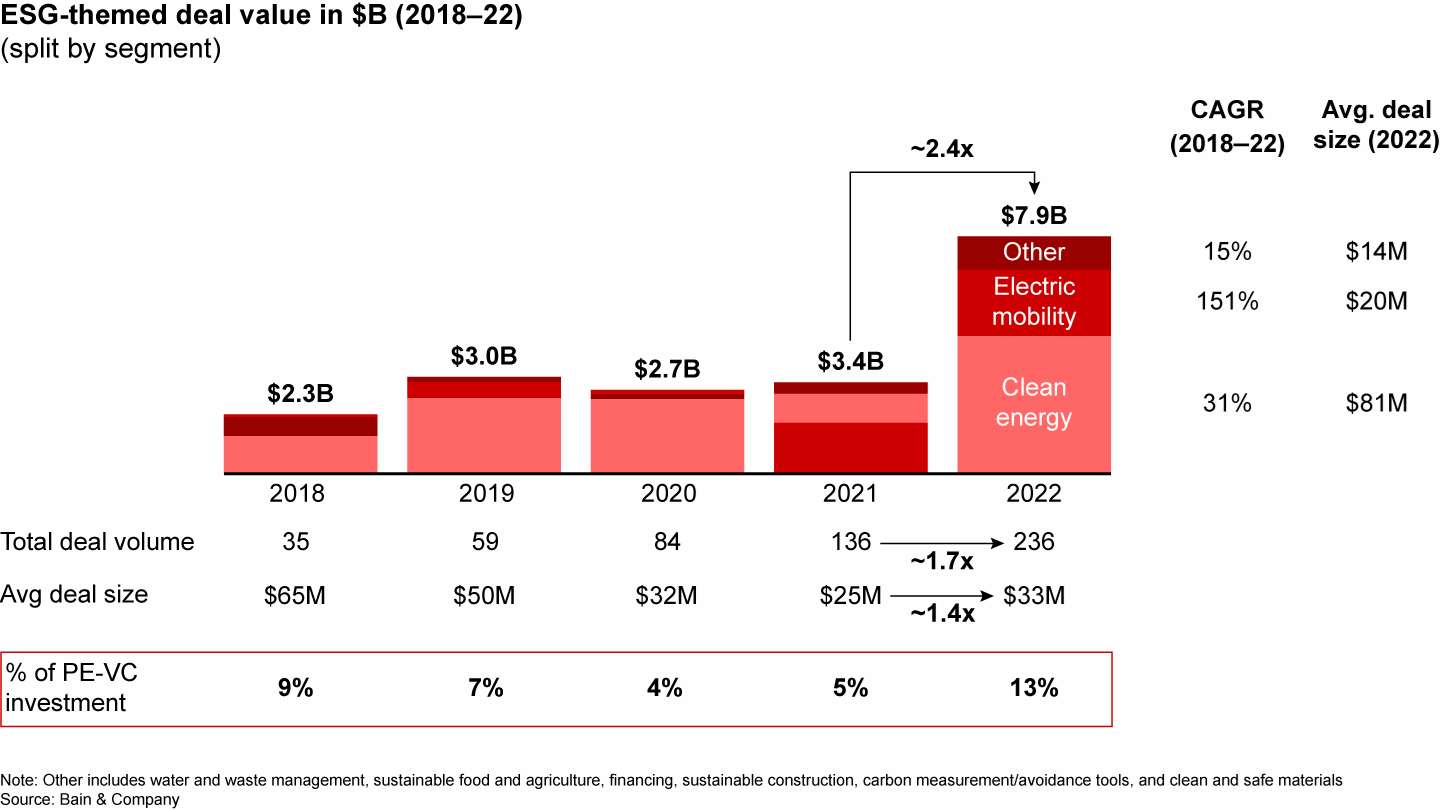
Depth of ESG integration with investment philosophy varies across funds with material deal activity across all types

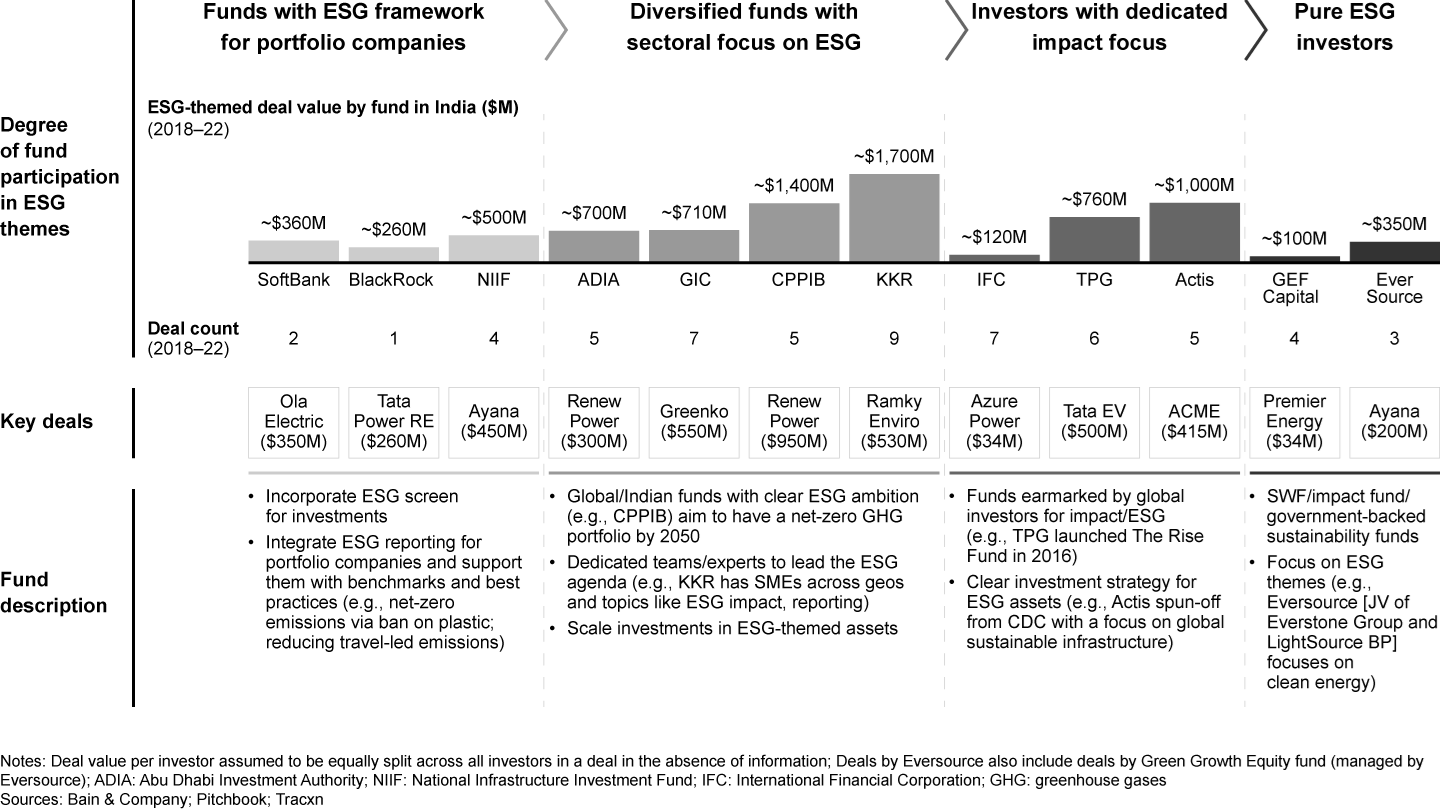
Clean energy generation and EV OEMs drove traction in deal value over 2018–22, driven by favourable policy environment and increasingly attractive TCO

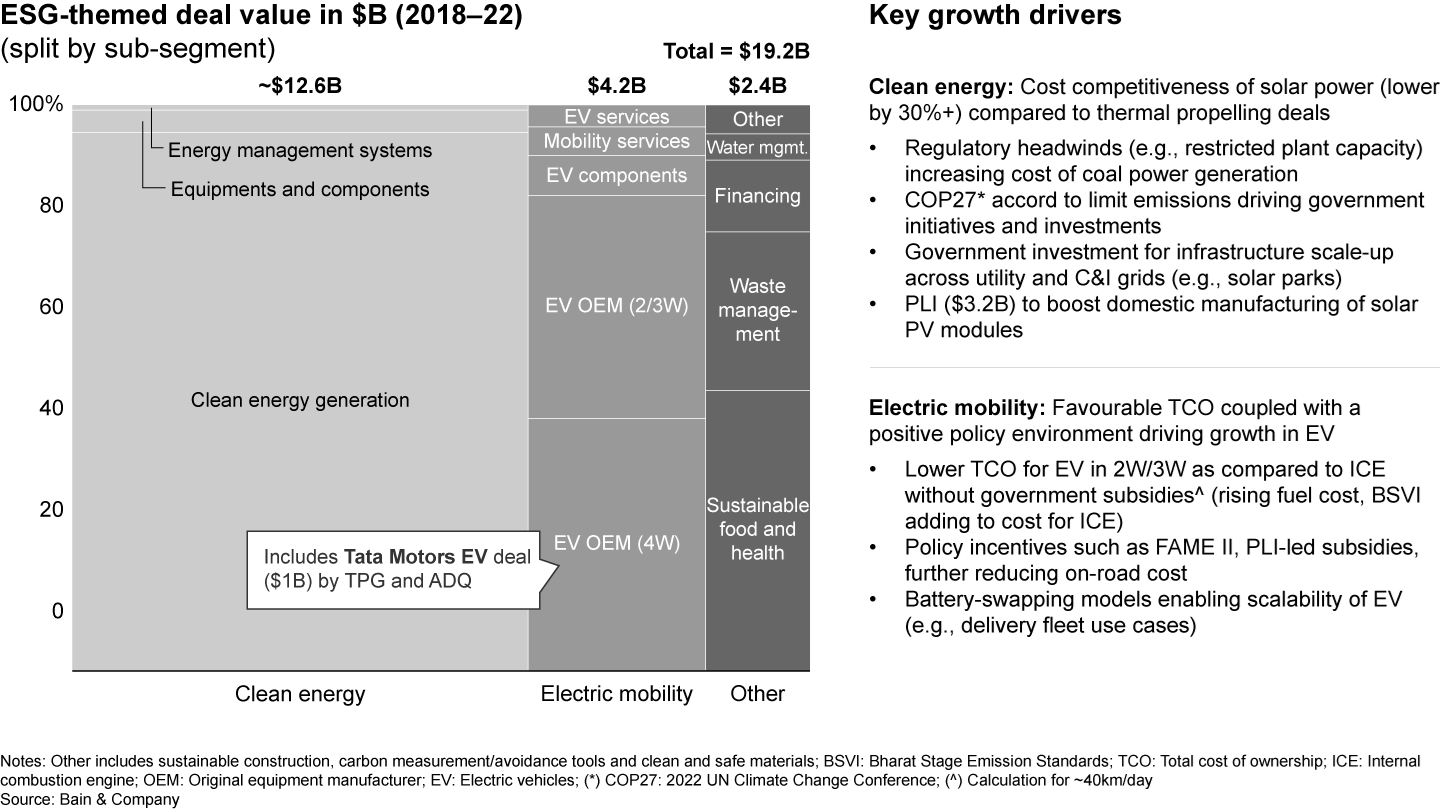
Clean energy and electric mobility also form the majority of the top 15 deals accounting for ~75% of investment activity in 2022

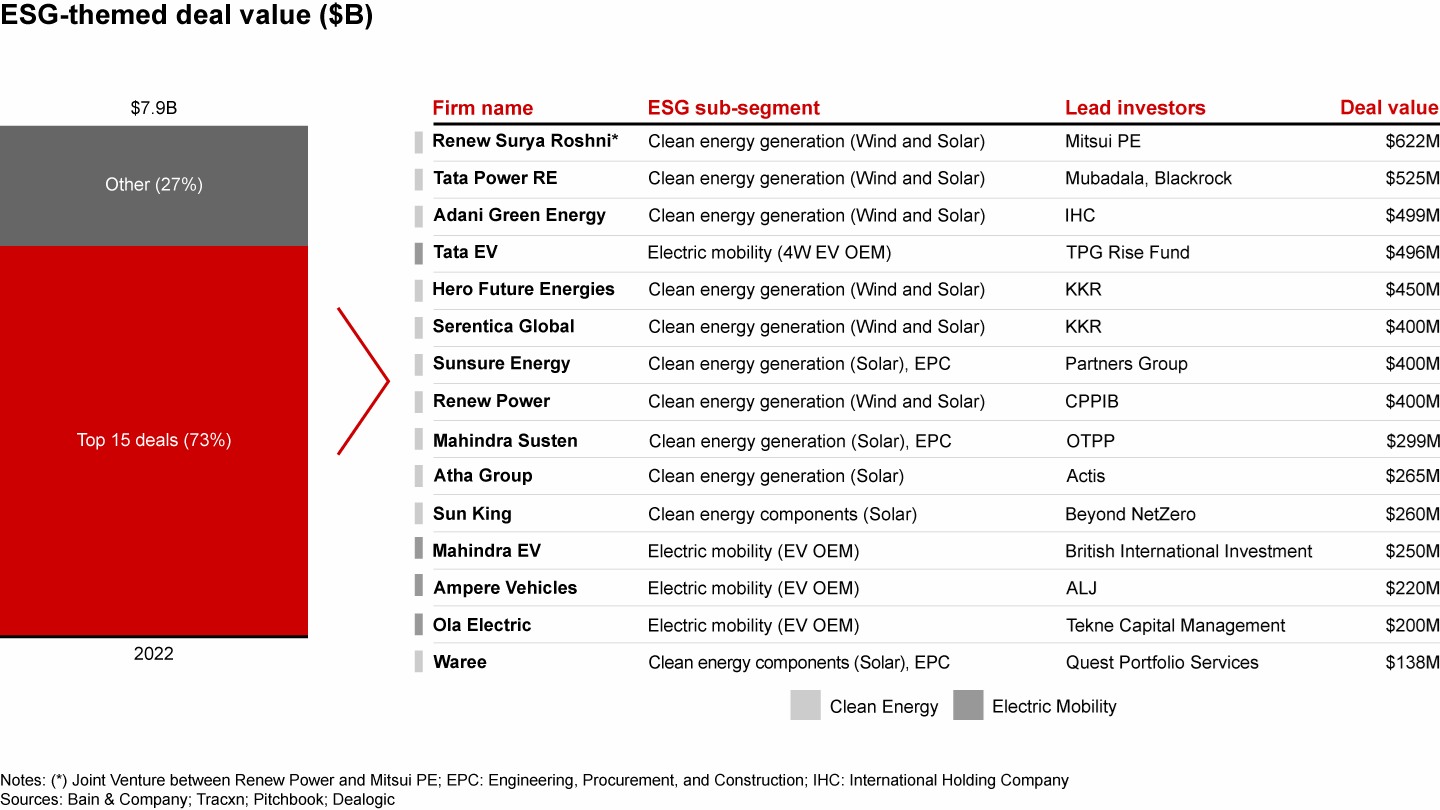
Traction in clean energy driven by increasingly attractive costs vs. thermal power and regulatory tailwinds boosting consumption

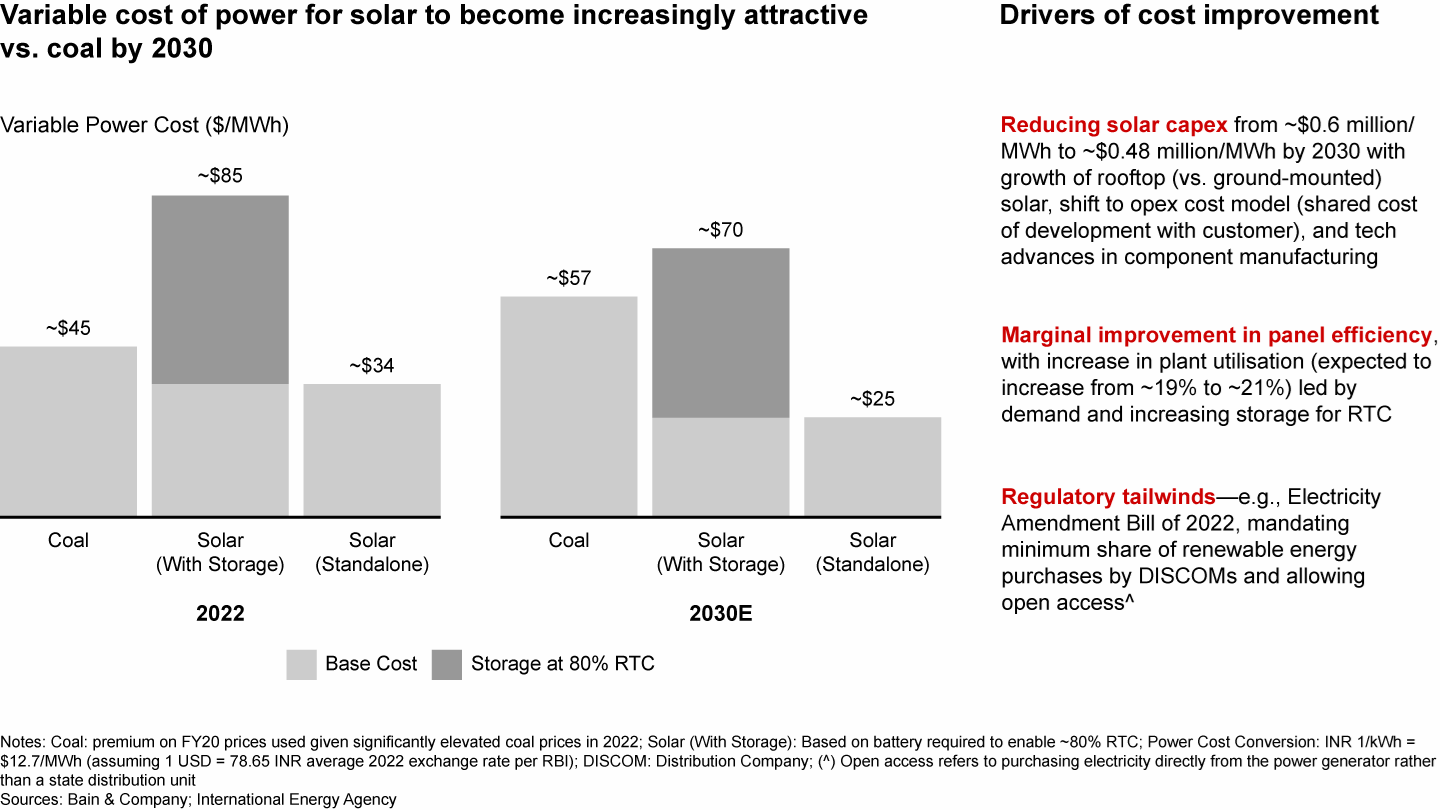
Significant penetration growth expected in 2W, 3W, and 4W in the electric vehicle segment

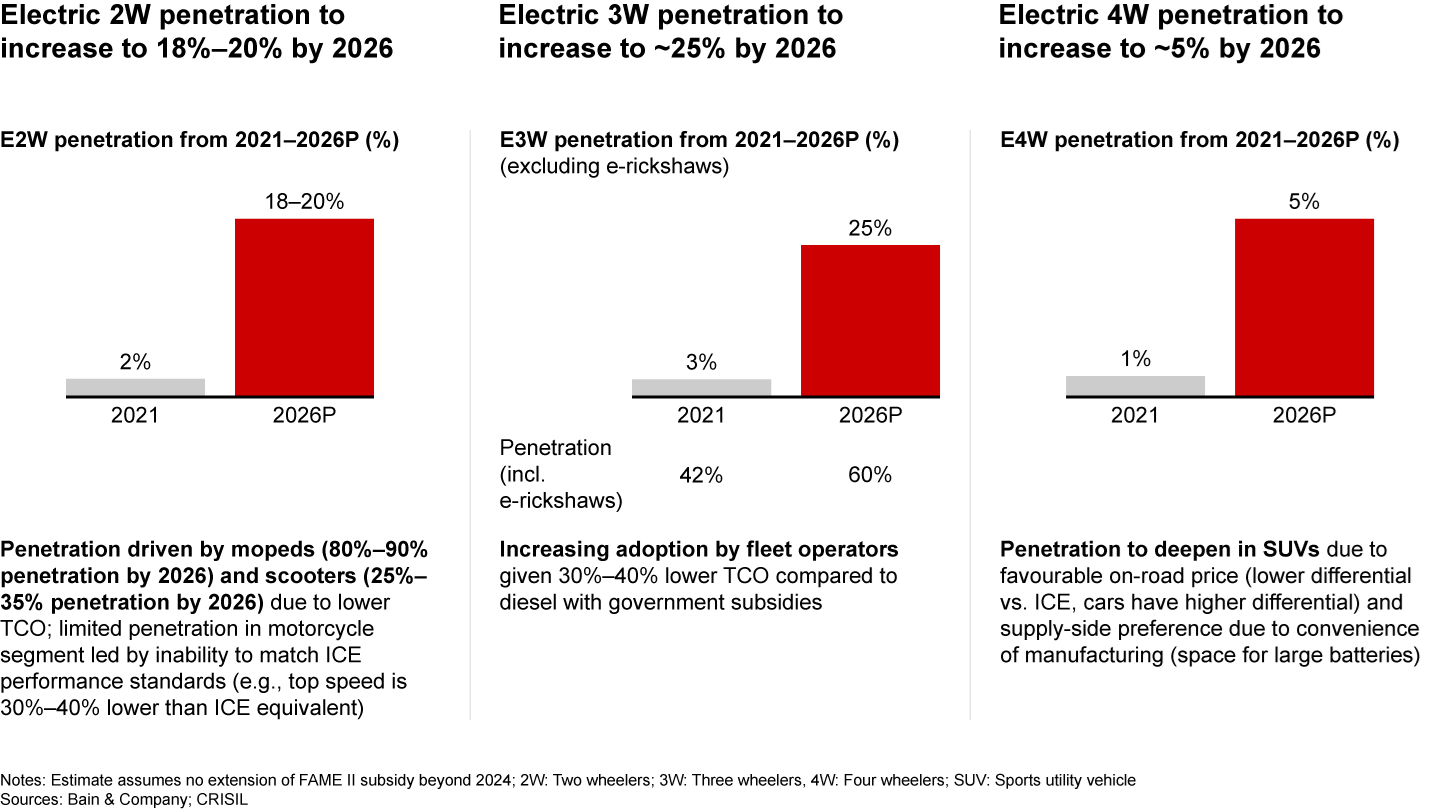
2W, 3W, and 4W OEMs contributed to 80%+ of electric mobility-themed deal value in 2022

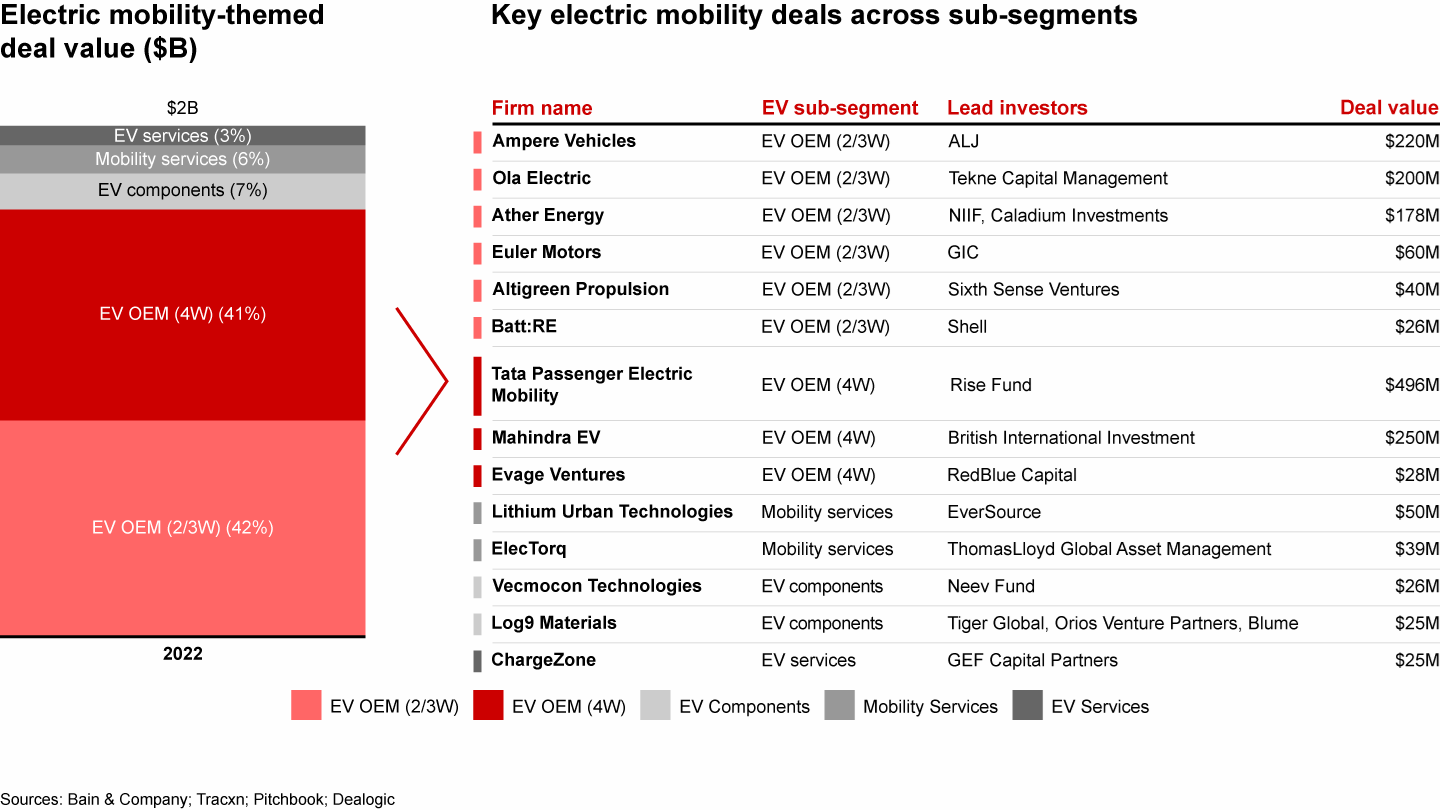
Specifically, for E2W, on-road price is lower compared to ICE in entry, but slightly higher in the middle and top tier segment

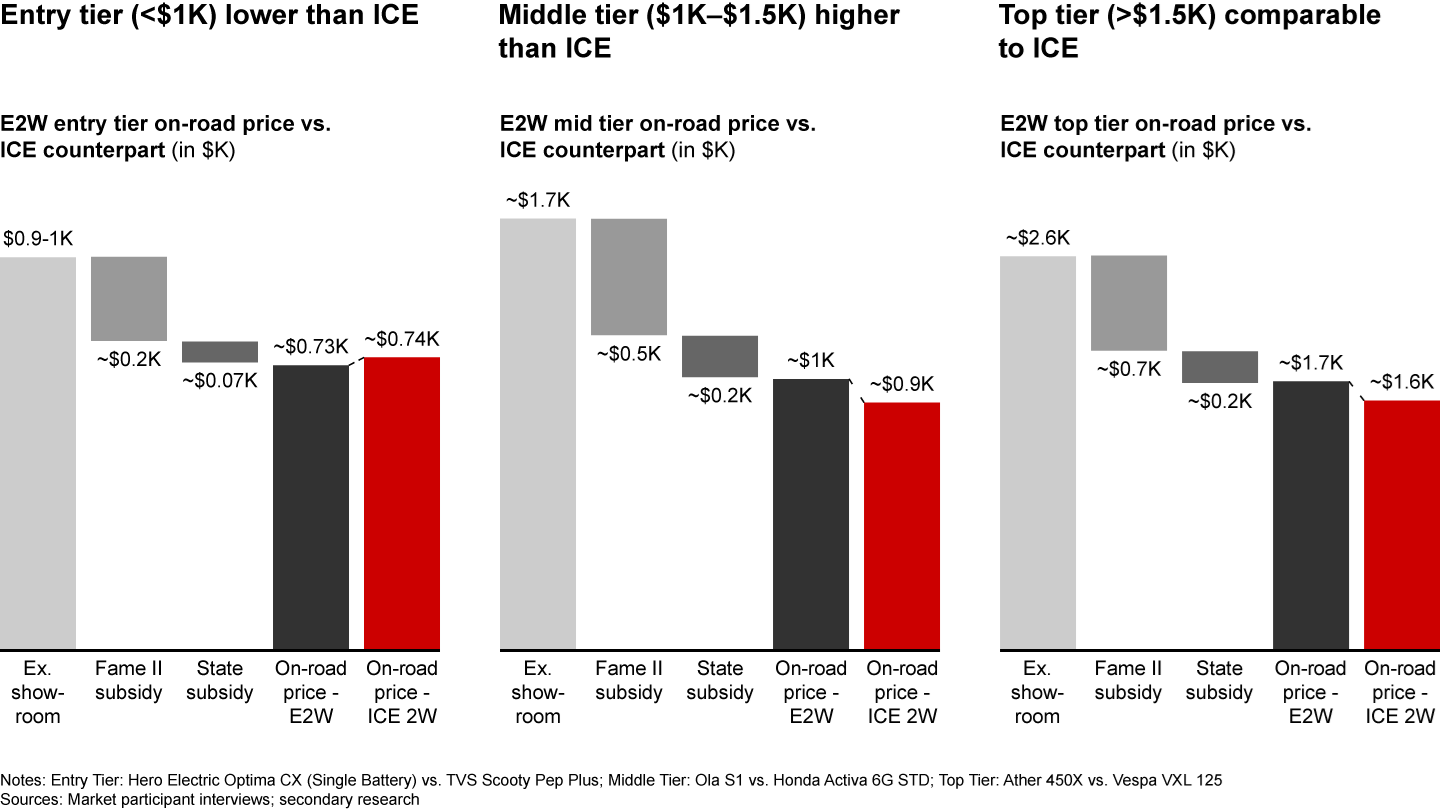
However, overall TCO for E2W is lower than ICE boosted by favourable policies and technological advances

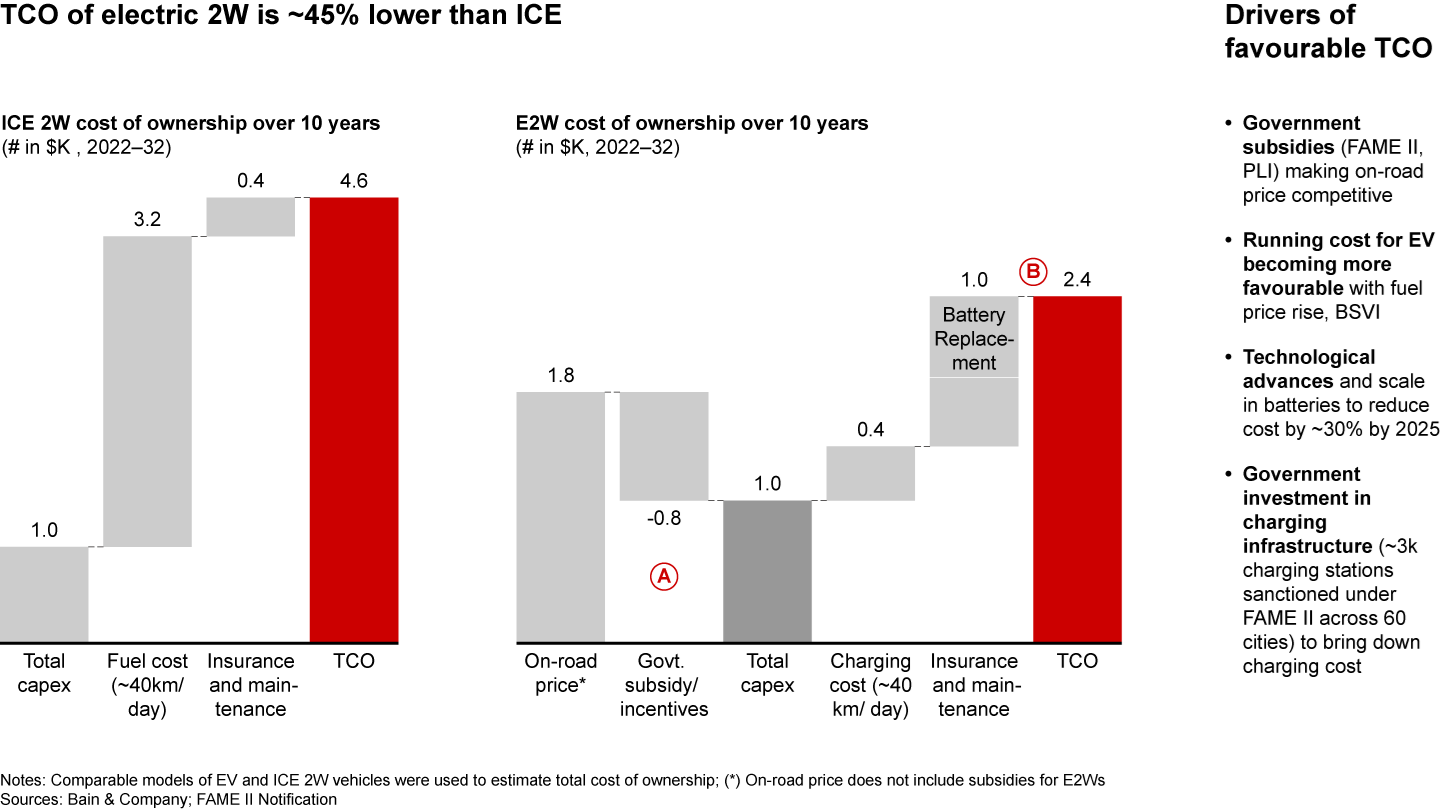
Apart from pricing, investors should assess EV OEMs across multiple parameters to evaluate long-term potential

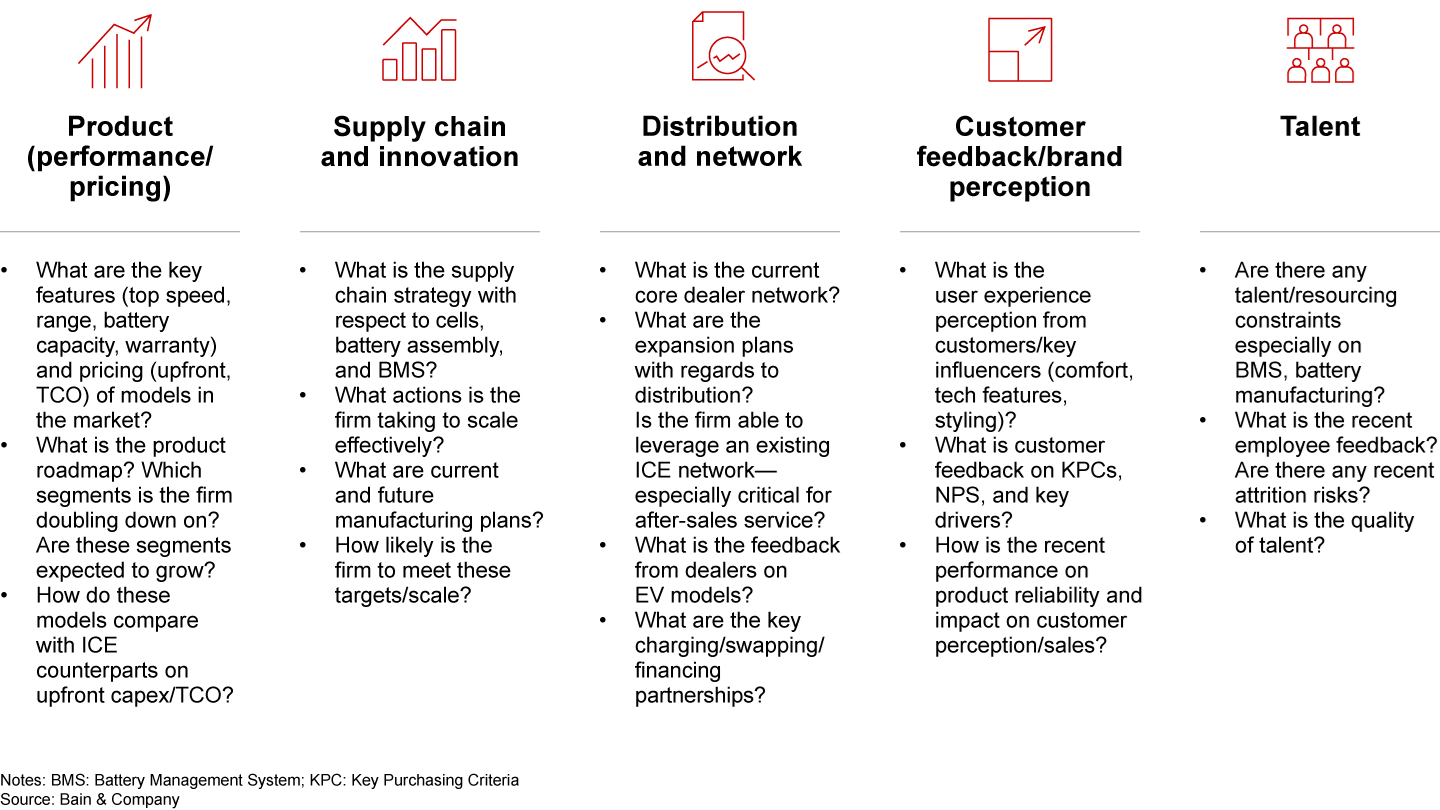
The investor perspective: Resilience with an eye on wins
- Top global and Indian investors expanded their presence in India in 2022 with larger fund-raises, increased India allocations and faster closes riding on the momentum of 2021. Leading Indian GPs such as Kedaara Capital and ChrysCapital crossed $1 billion in fund sizes and global funds are allocating increasing share of Asia-Pacific focused funds towards India.
- Further, an increased play by LPs and SWFs has been witnessed as LPs shift from co-invest towards solo deals with an approximately tripled increase in solo deal volumes since 2020. LPs closed more than 30 solo deals valued at $6 billion in 2022, growing from $2 billion in 2021.
- Investors also accelerated sector diversification this year—average sector spread for top investors increased from about 3 in 2021 to about 5 in 2022. More funds are expanding into traditional sectors like healthcare, BFSI, energy, and manufacturing, bucking a trend between 2018 and 2021 where sector expansion was led by tech sectors.
- Despite an abundance of dry powder, the changing sentiment through the year has driven a fundamental change in the investment approach. Investors are consolidating focus on fewer, higher-quality assets and driving value creation within their portfolios with a dedicated push towards profitability.
Multiple investors surpass previous fund-raises in record time, but capital deployment to remain cautious

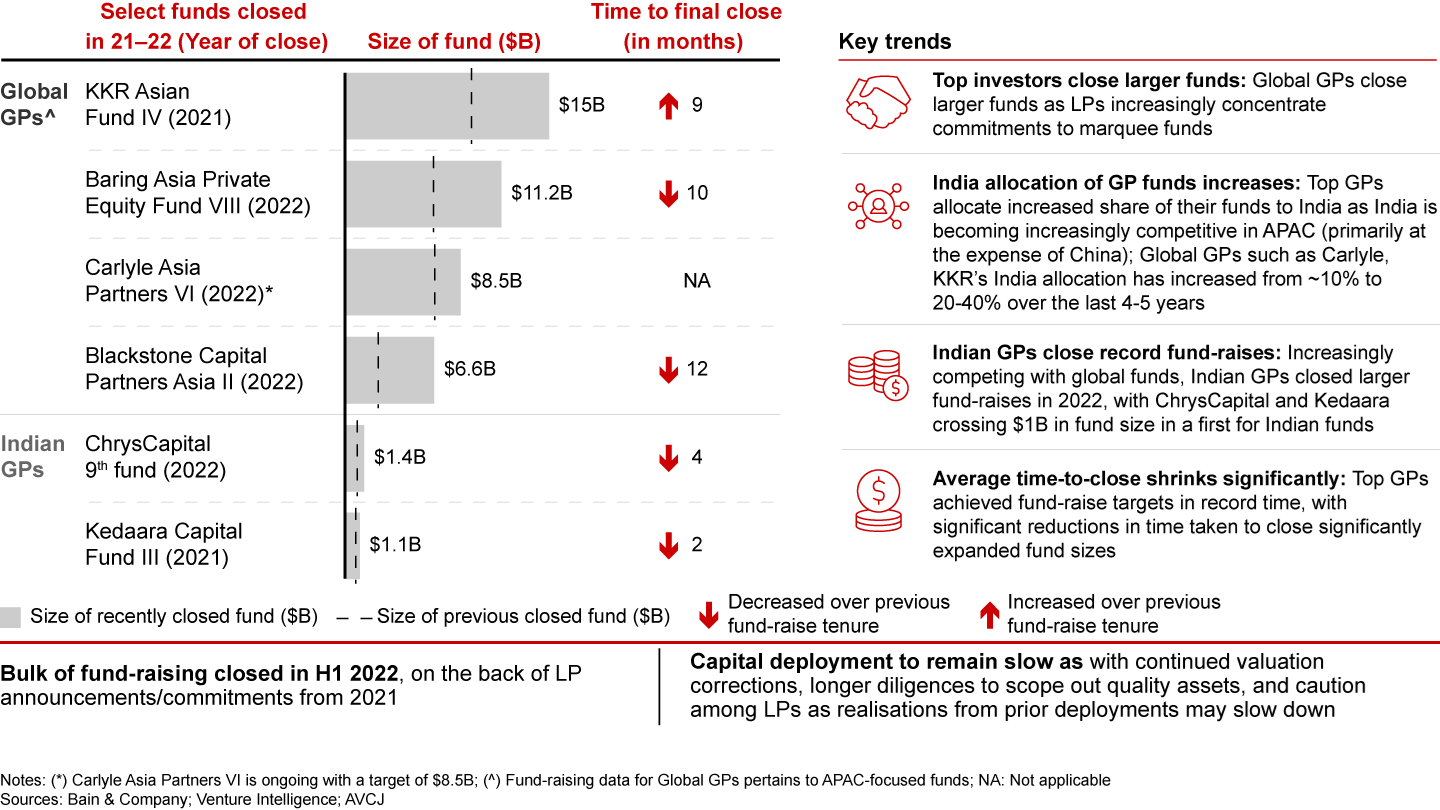
LPs, SWFs, and pension funds deepen bets on India with an expansion in solo play

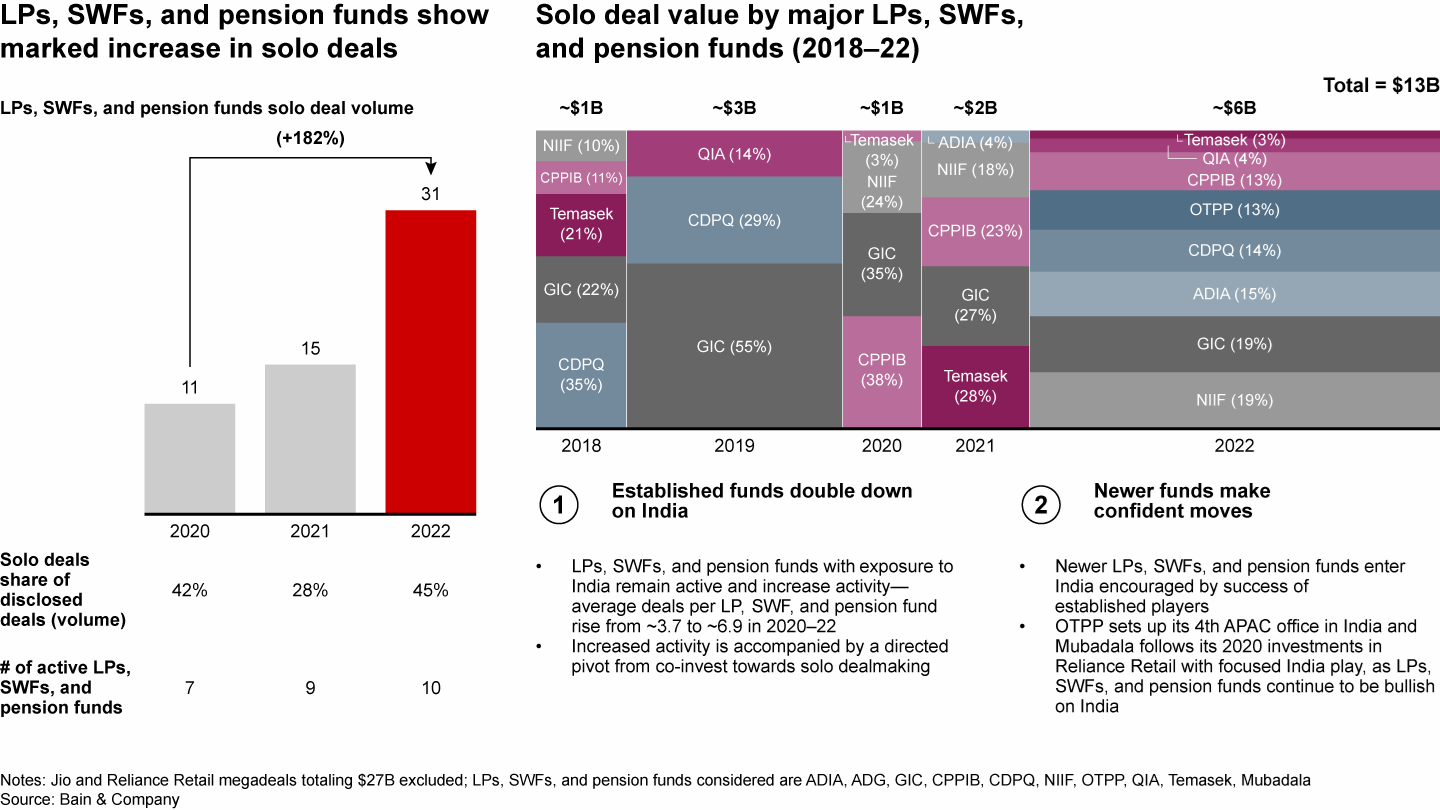
Active investors broadened sector exposure with focus on traditional sectors through large deals

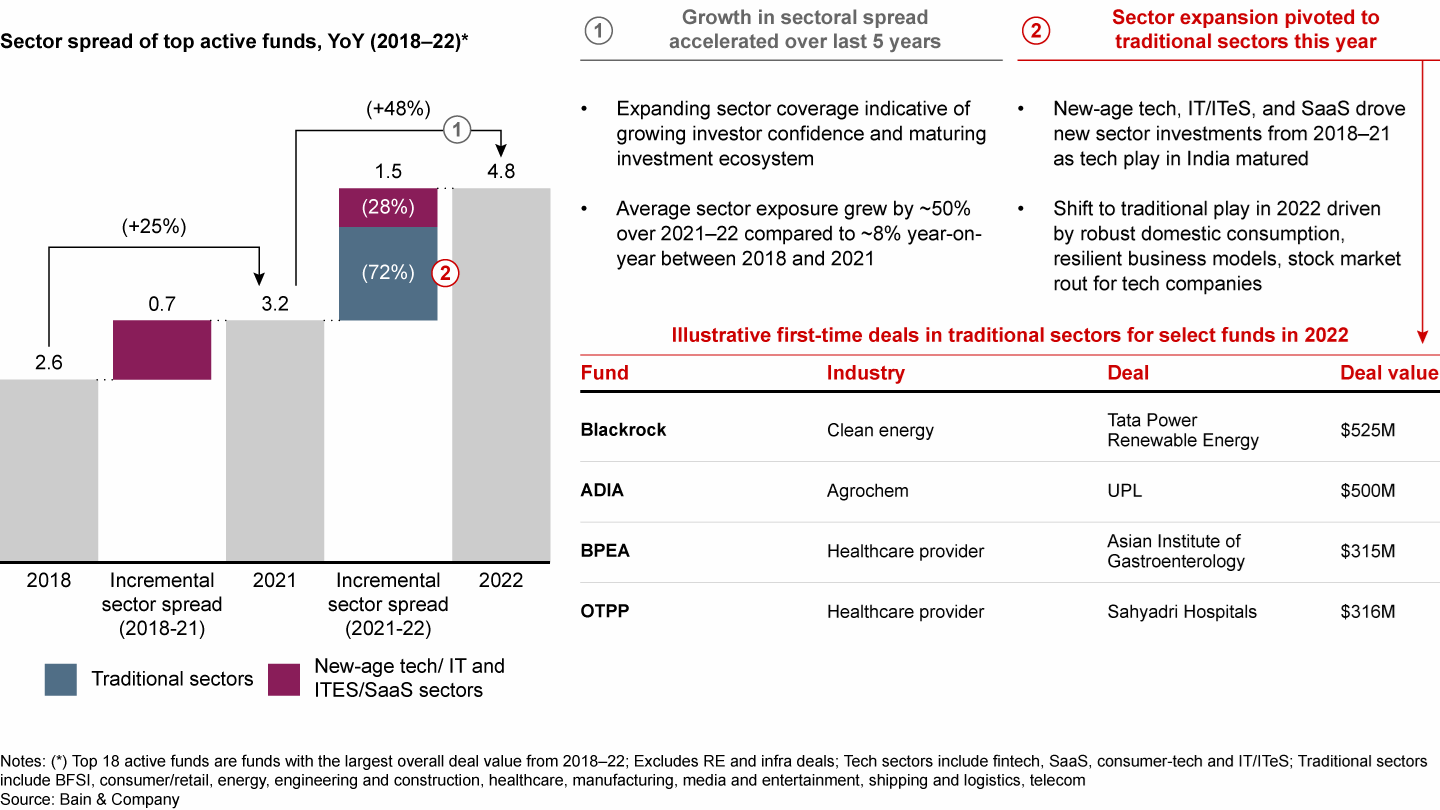
PE investors are prioritising quality assets with a path to profitability amidst cautious deployment, and driving value creation within the current portfolio

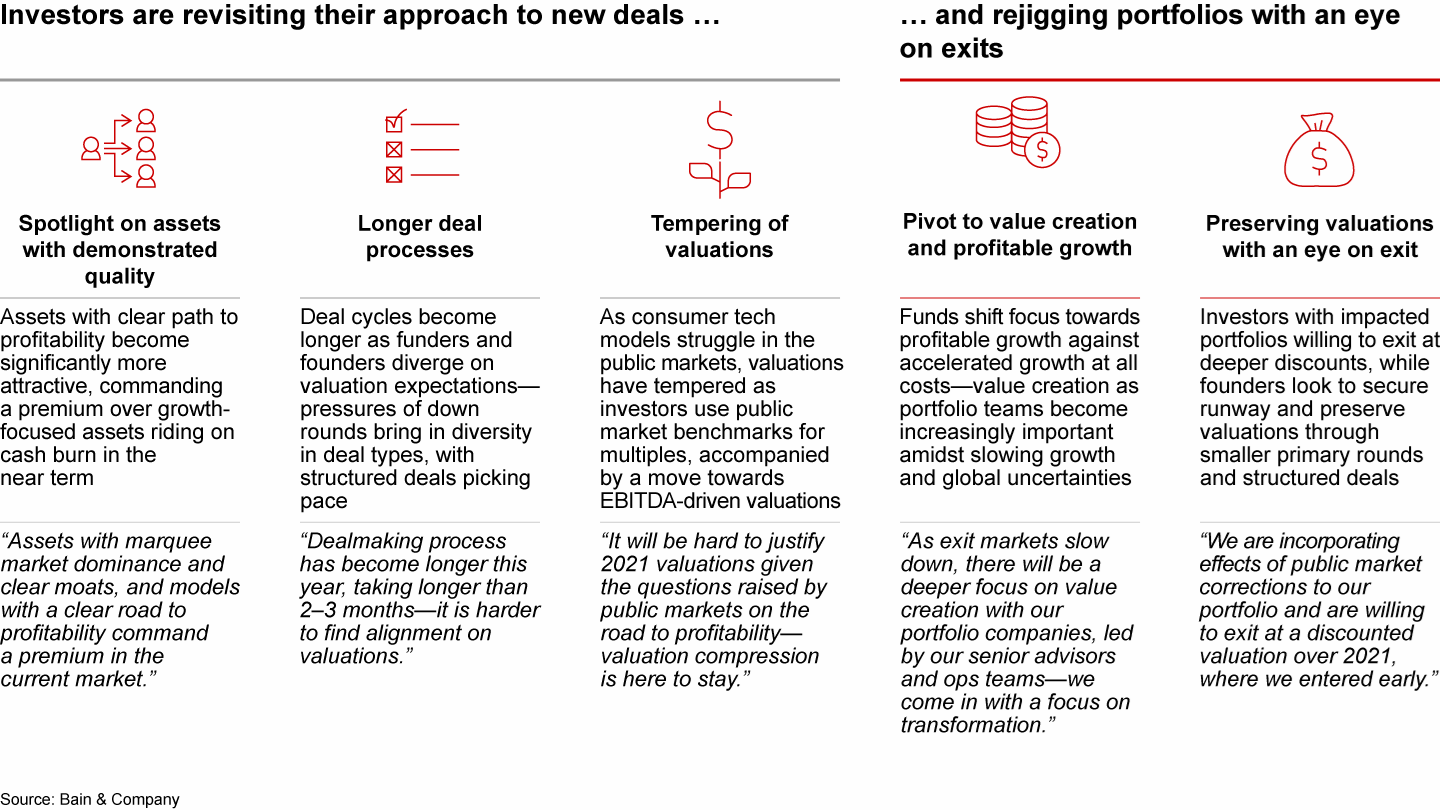
Looking back to look ahead: India’s accelerating flywheel
- From its foundation in the 1980s to a growing and resilient investment ecosystem today, private equity in India has burgeoned, especially in the last decade. The investor base has expanded from about 200 to more than 800 active investors, and there has been an expansion and diversification in pools of available capital and an acceleration in India-focused capital. These shifts are complemented by growing founder and talent experience, favourable shifts in the regulatory landscape, and supporting digital infrastructure which has helped boost innovation.
- Investors with depth in India exposure have witnessed tremendous growth in exit opportunities, with secondary and strategic sales markets growing manifold. Since the 2010s, many high-quality assets with specialised play have enabled value capture of 10x to 20x for multiple investors across investment cycles.
- While funds are cautious about 2023, they have started looking deeper at the Indian opportunity—with an expanded focus towards sectors that are expected to capitalise on our growing domestic consumption, manufacturing sectors which are expected to benefit from China + 1 tailwinds, and continued investment in India for global tech services and SaaS firms.
- A shift in the shape of deal flow is anticipated, with a drawdown in the number of mega ($1B+) deals, an increased interest in take-privates and corporate carve-outs, and efforts towards designing a path to profitability for portfolio companies, even as the pace of deal activity thins out.
Private equity in India has come a long way and is set to further consolidate gains

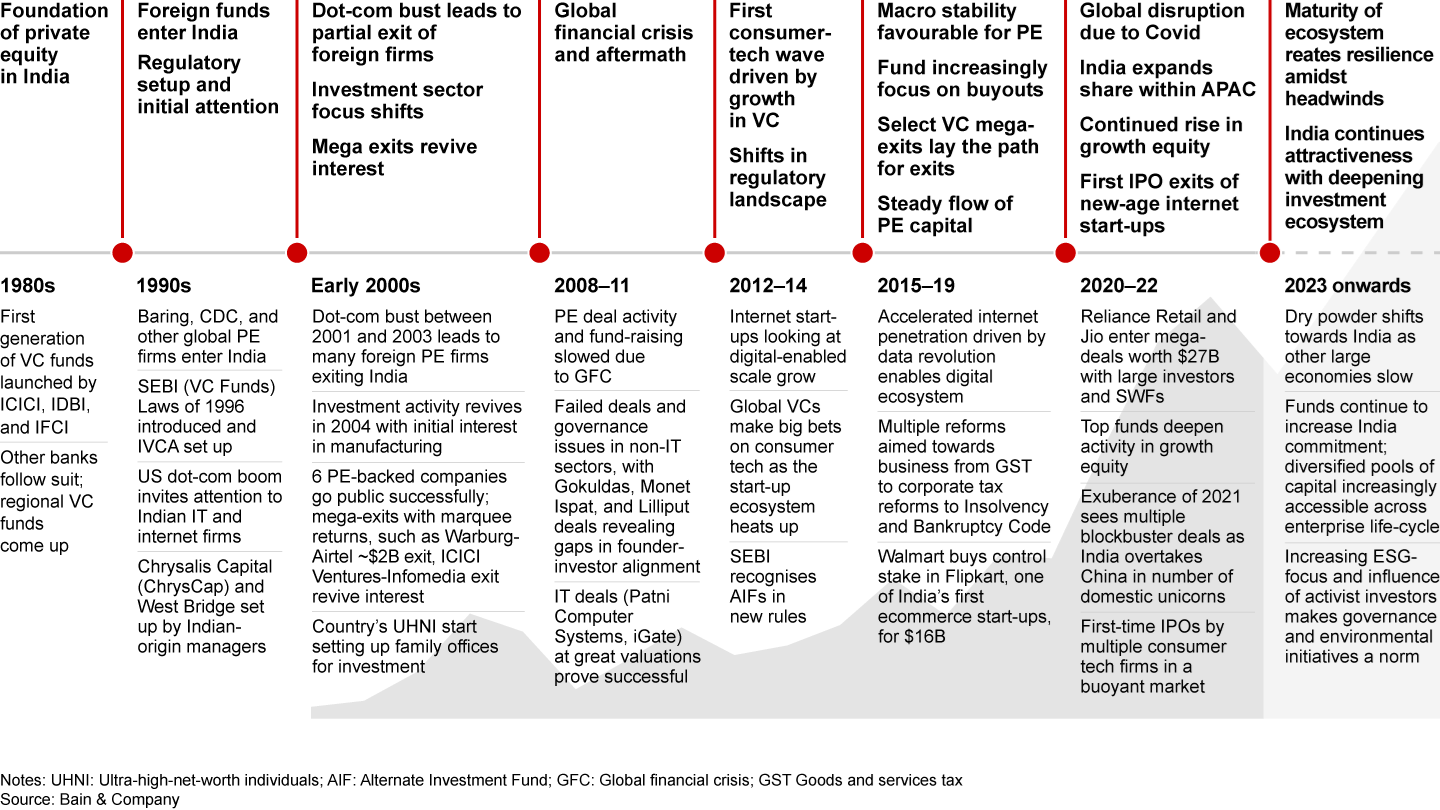
Superior value delivered by the investment ecosystem has been enabled by founders, investors, and talent coming together to build remarkable global assets

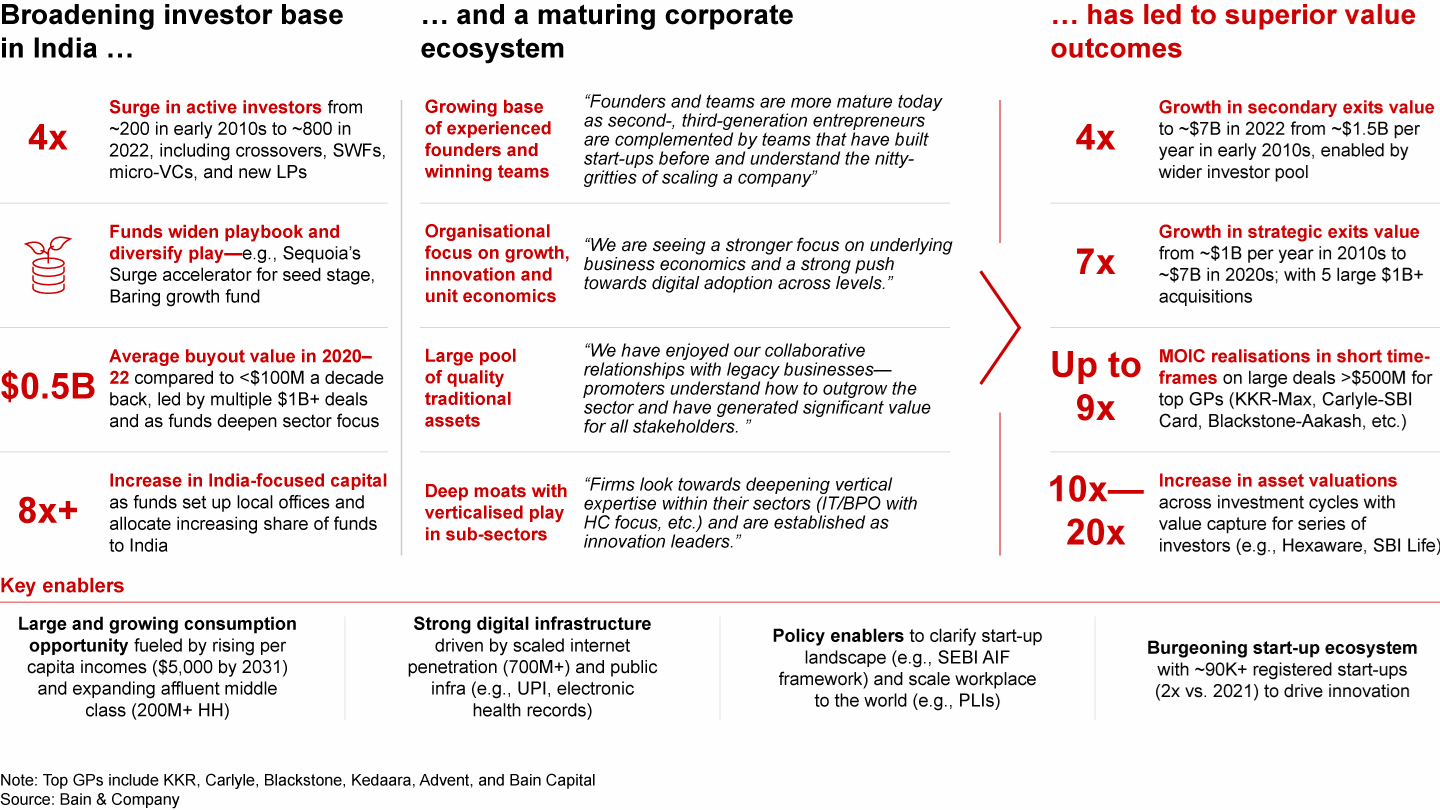
2023 is expected to be a year of cautious optimism across stakeholders, with a continued push to bolster the ecosystem despite global headwinds

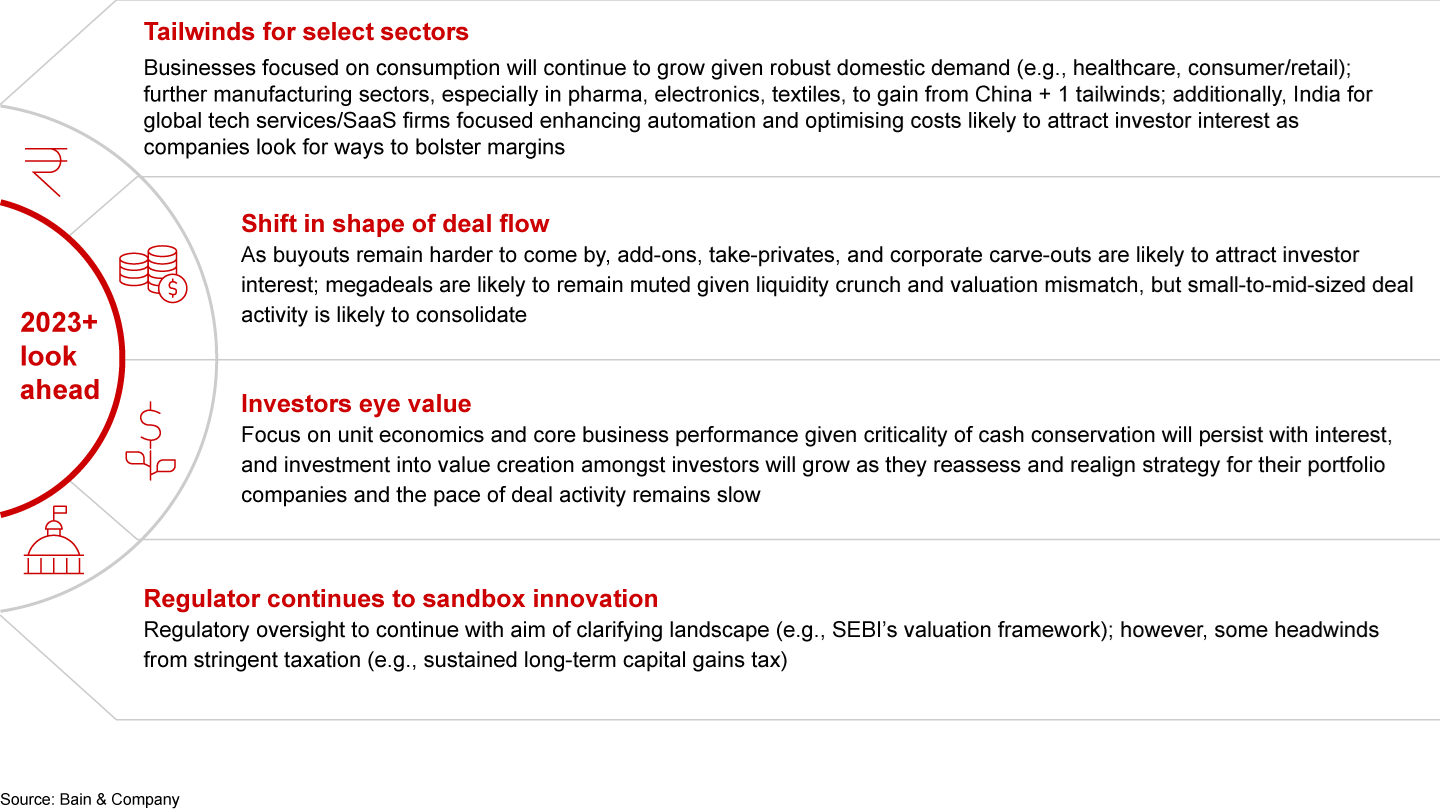

Written in collaboration with IVCA
Established, for over a decade, by industry professionals with a unified aim to drive forward alternate capital industry in India. The IVCA (Indian Venture and Alternate Capital Association) is India’s apex body representing the interests of PE/VC industry, real estate, infrastructure and credit funds, limited partners, family offices, and VCs. IVCA is a nonprofit organisation powered by its members. The members are firms from around the world, including investment managers, investment advisors, general partners, funds whose sponsors are sovereign wealth funds, pension funds, national governments, large government entities, bilateral/multilateral financial institutions, high-net-worth individuals, and family offices. For more information, visit visit www.ivca.in